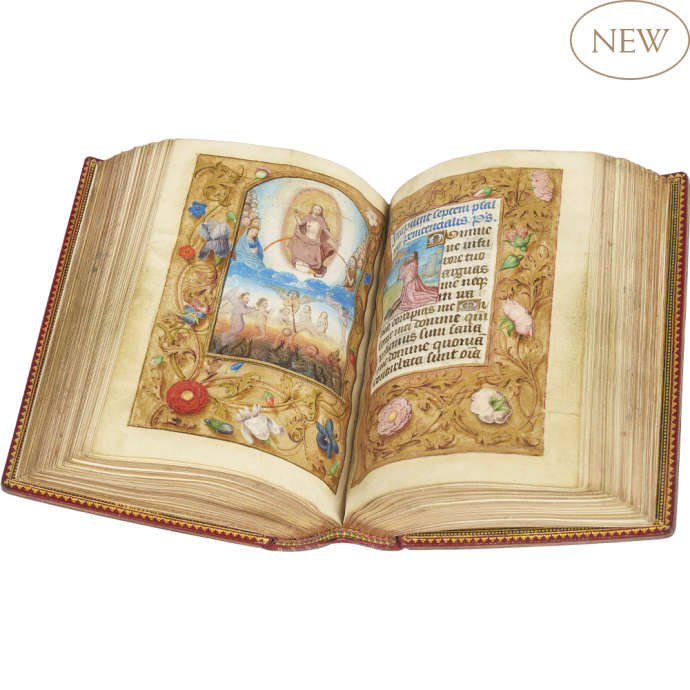


Book of Hours (for use in the region of Marchiennes)
, Northern France, Hainaut (Valenciennes?), c. 1500




Book of Hours (for use in the region of Marchiennes)

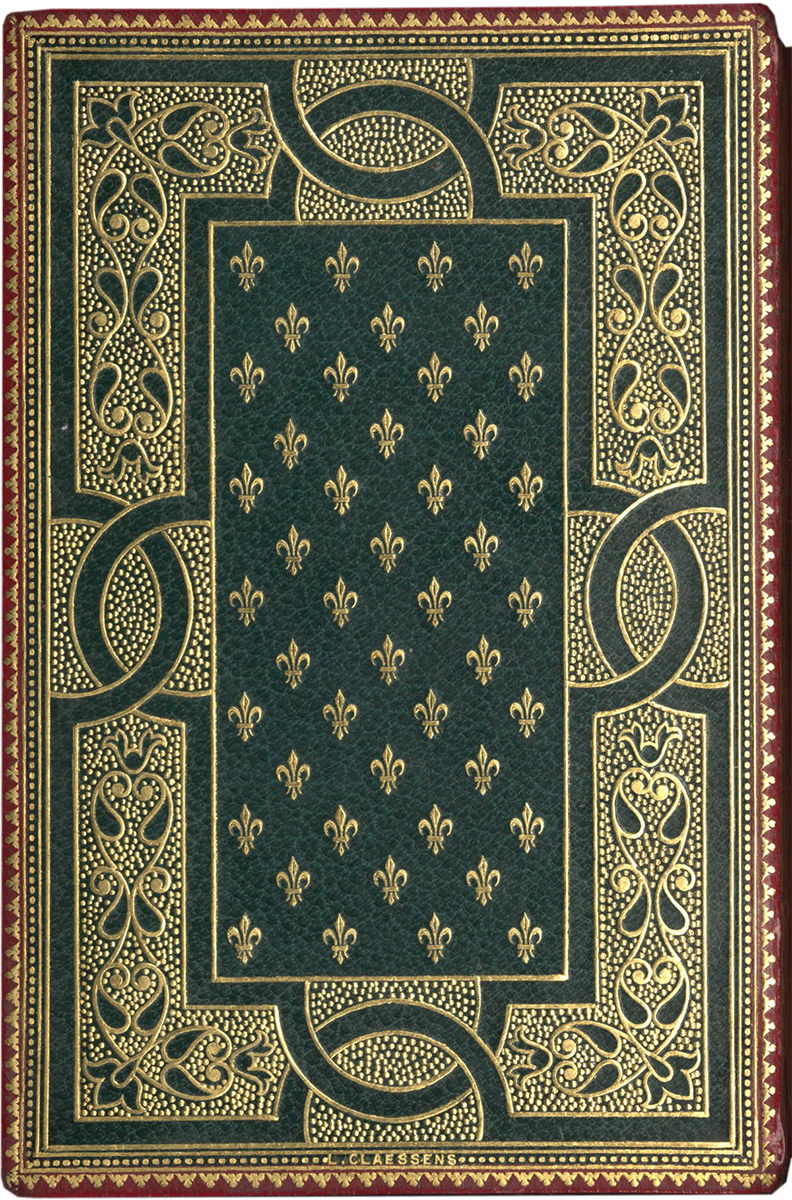


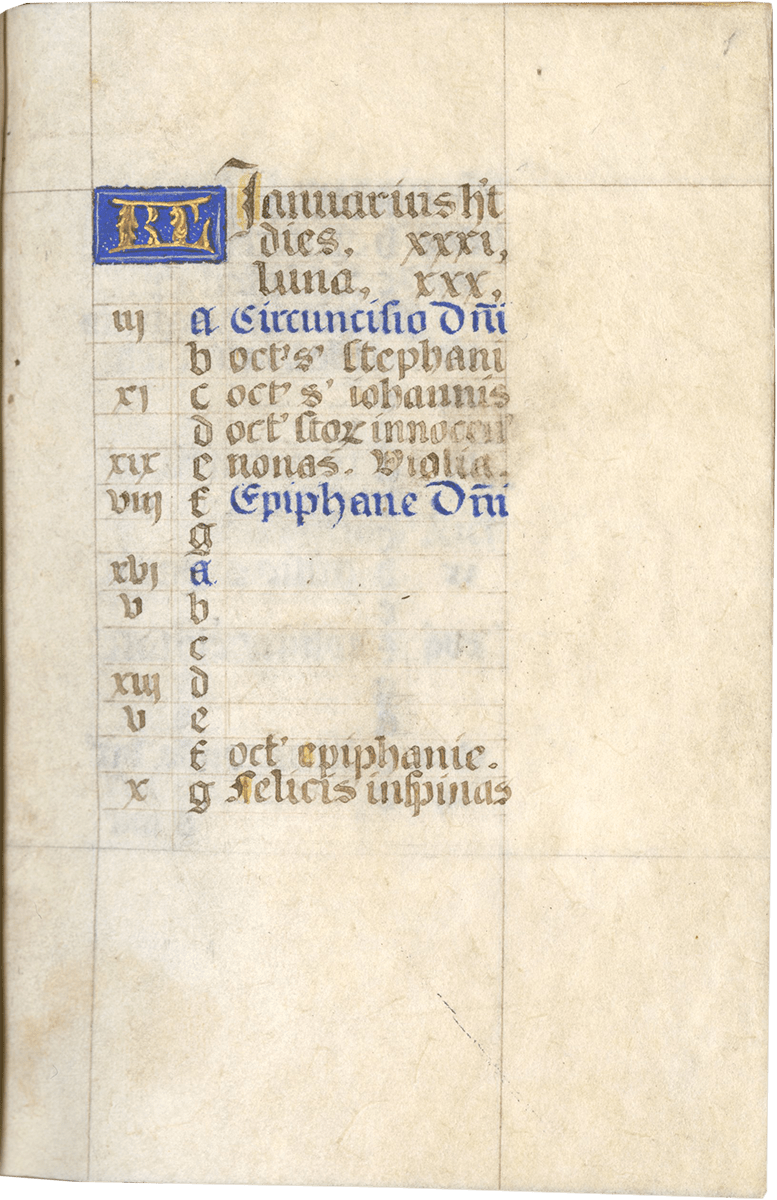
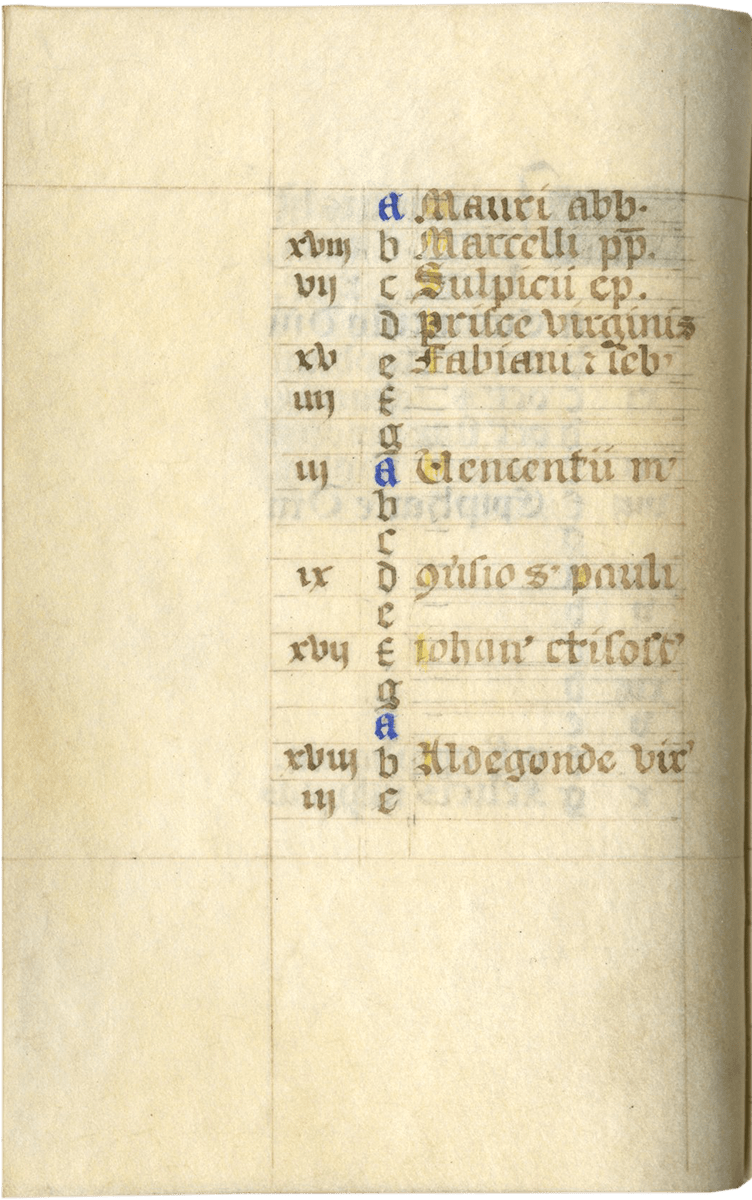
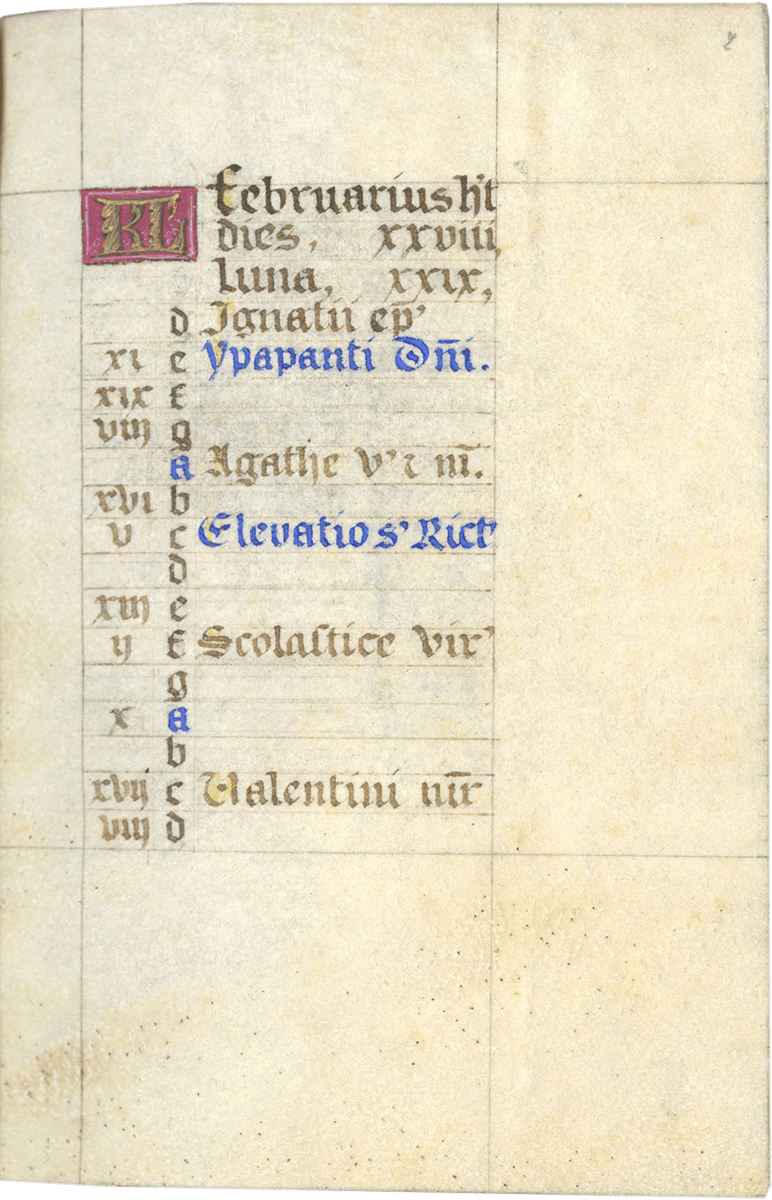
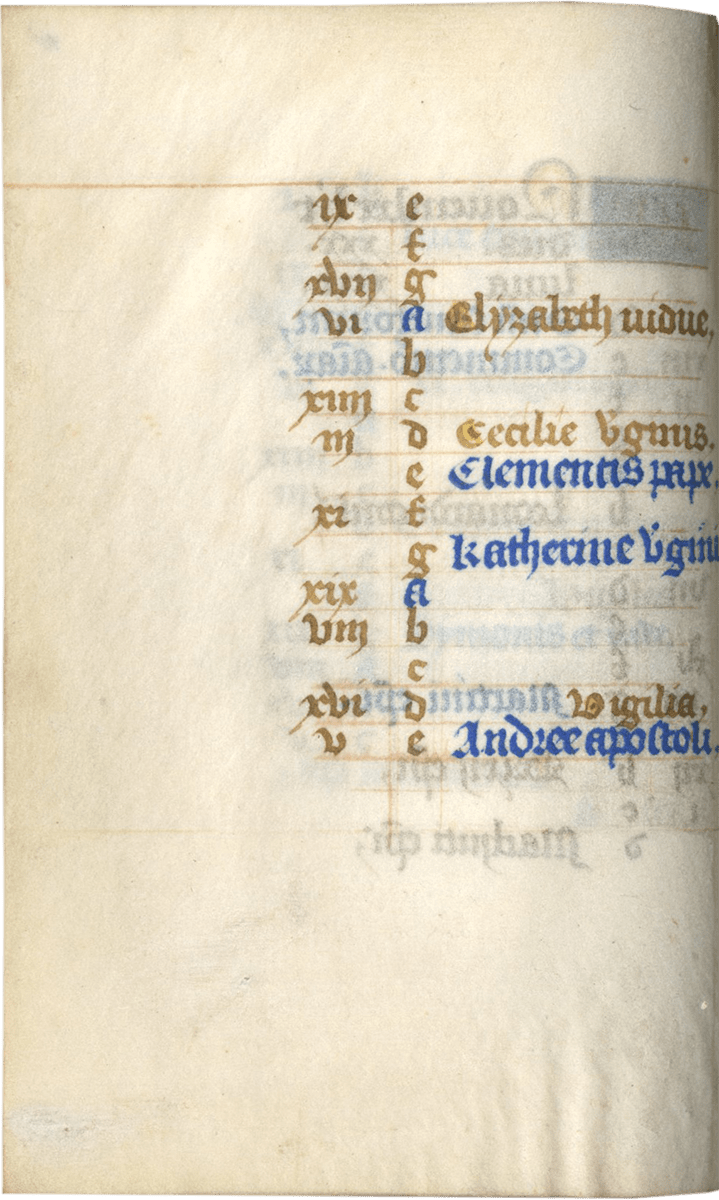

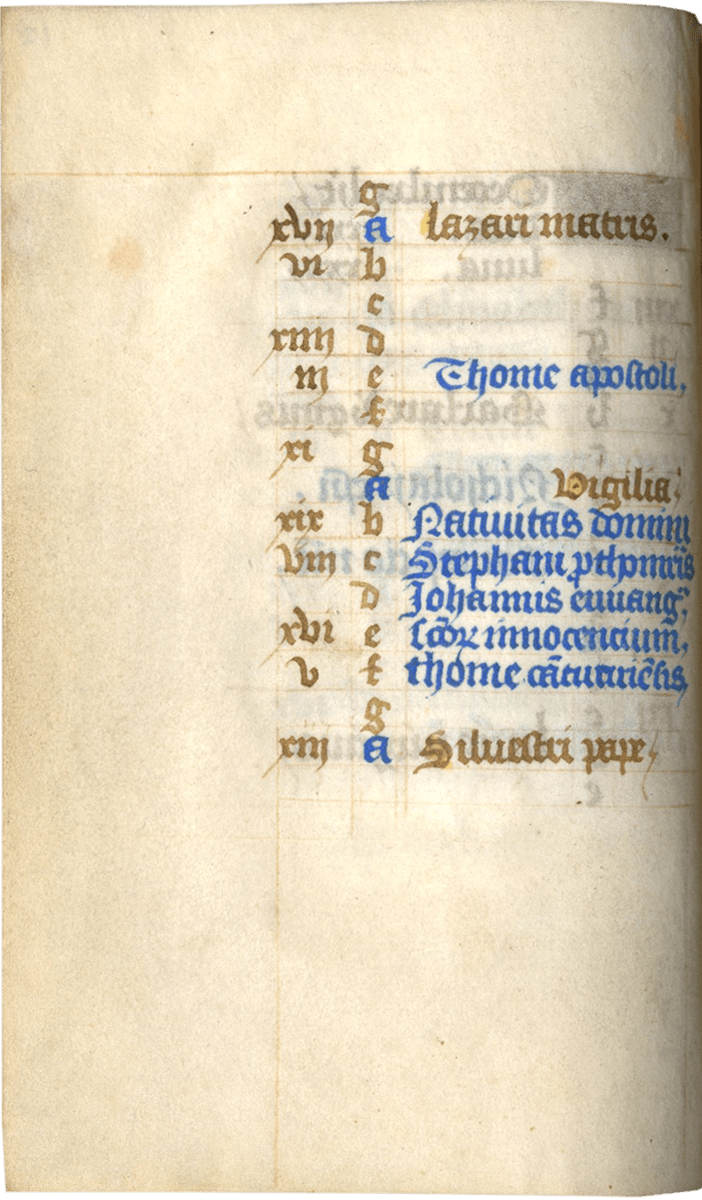

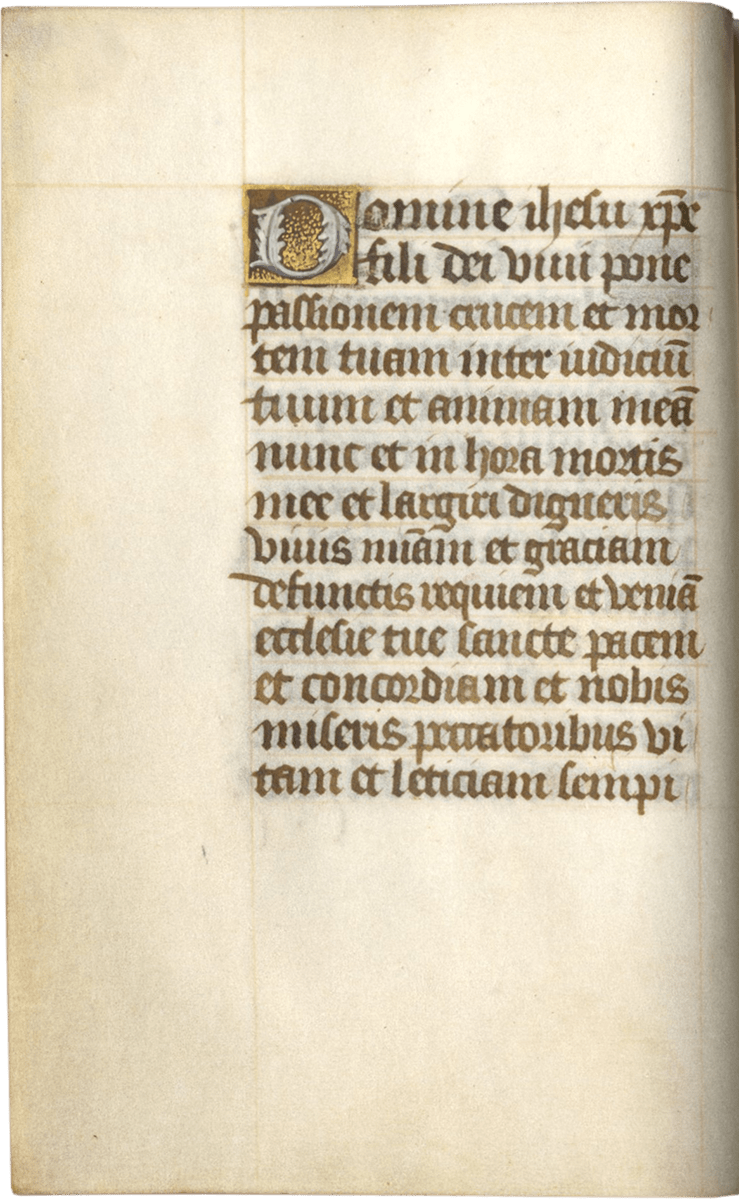

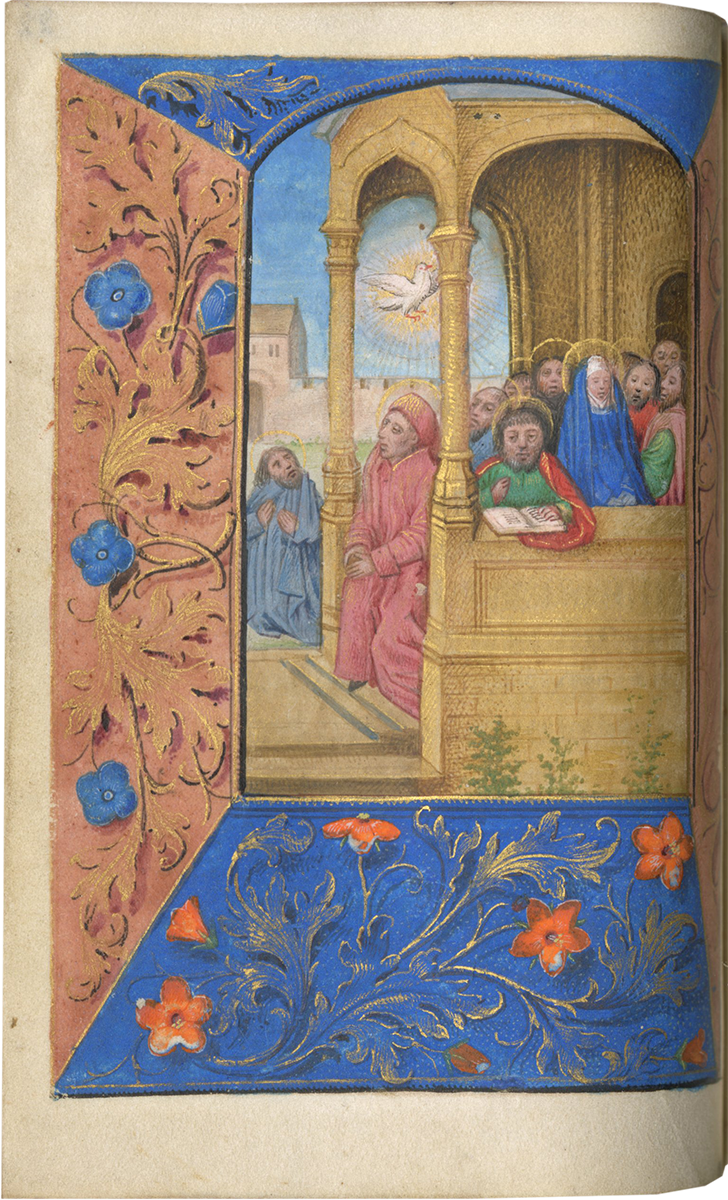
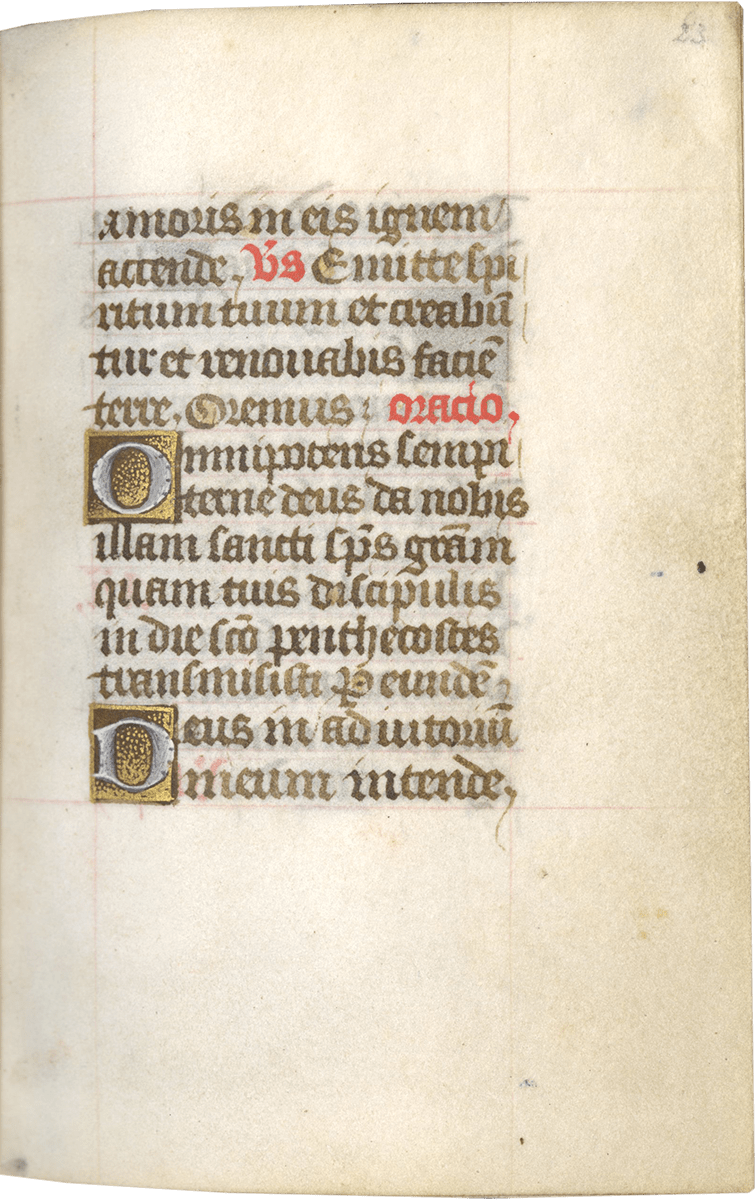

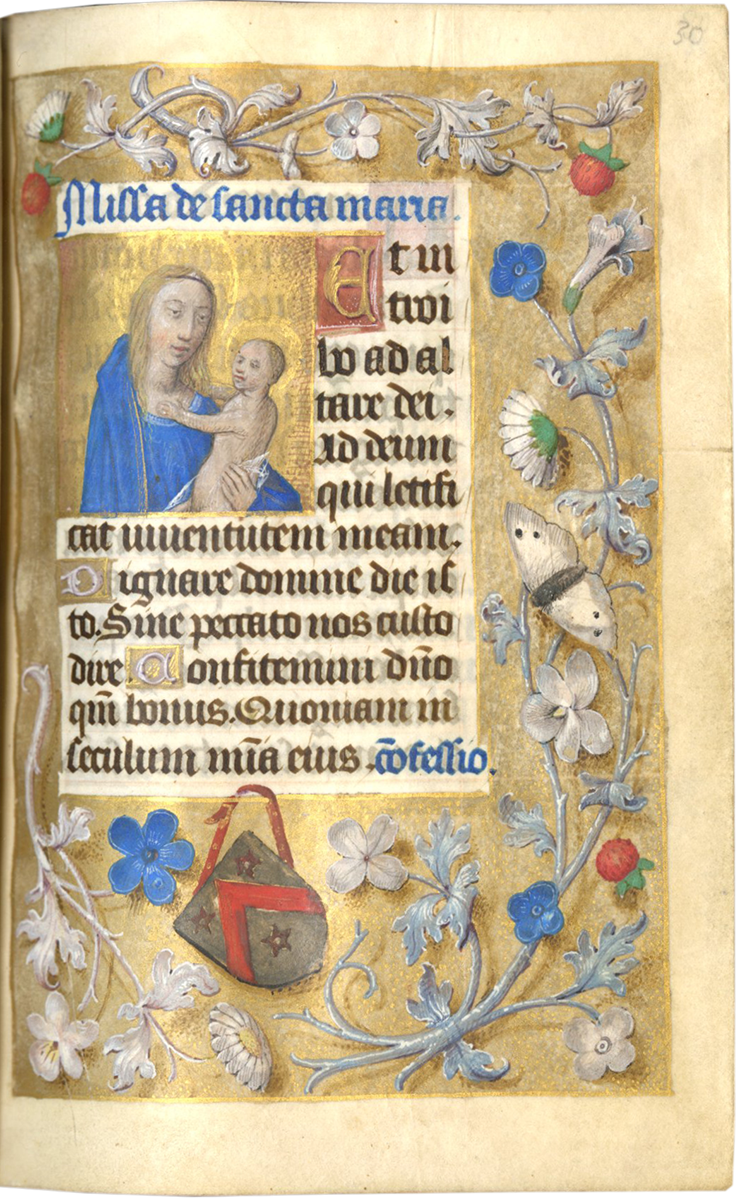

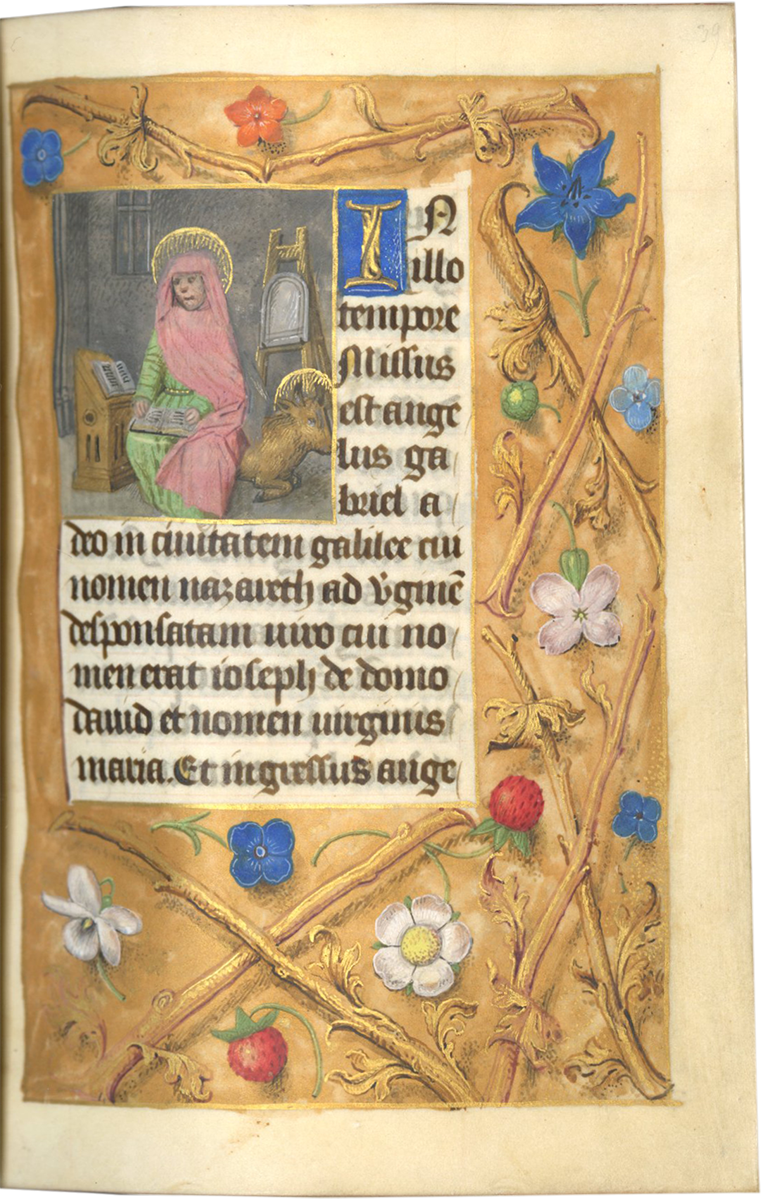


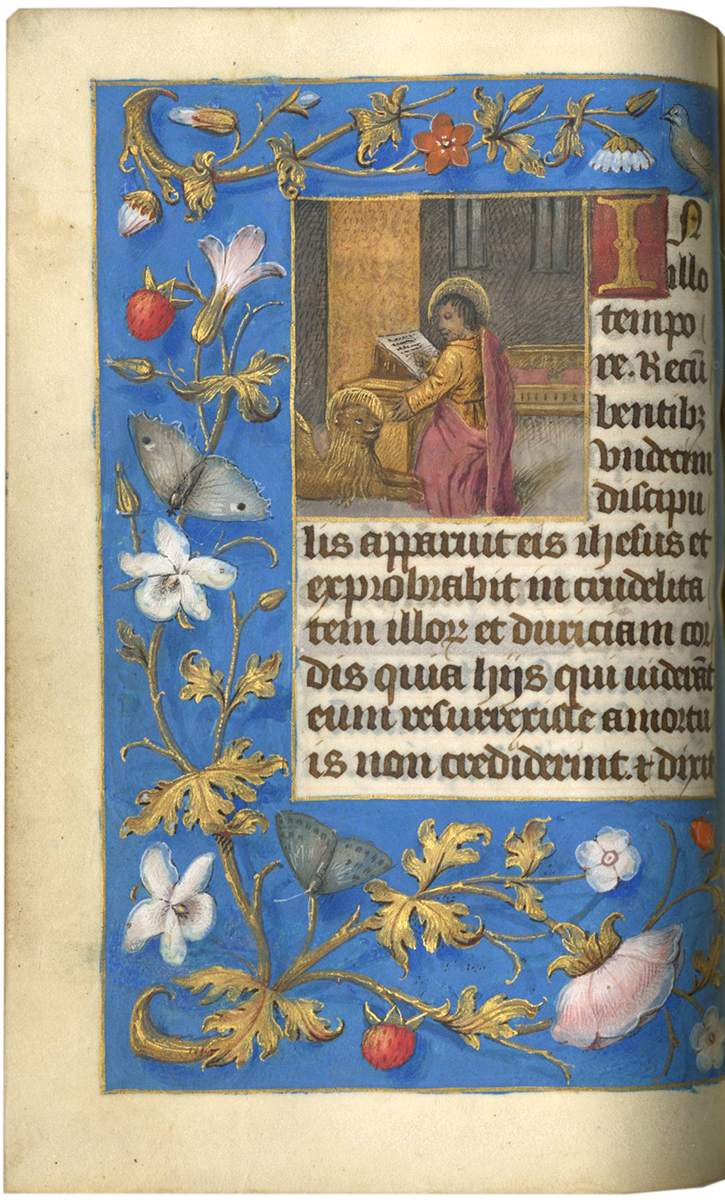
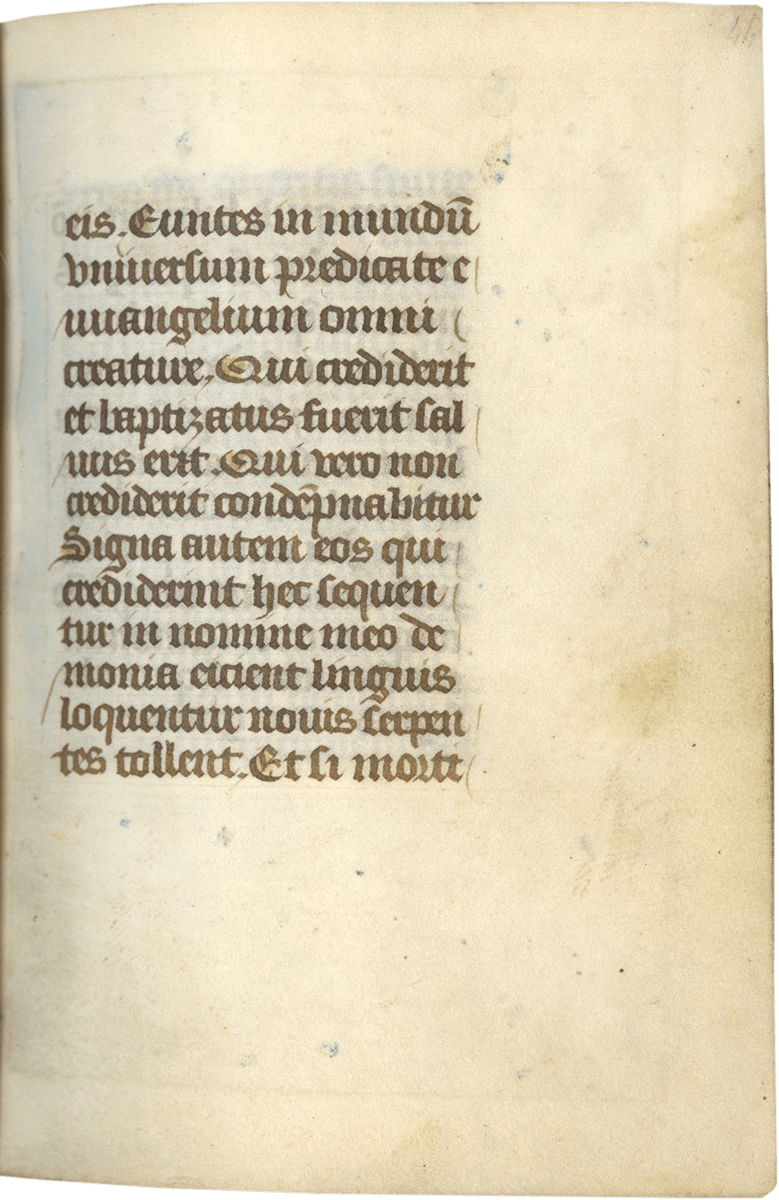
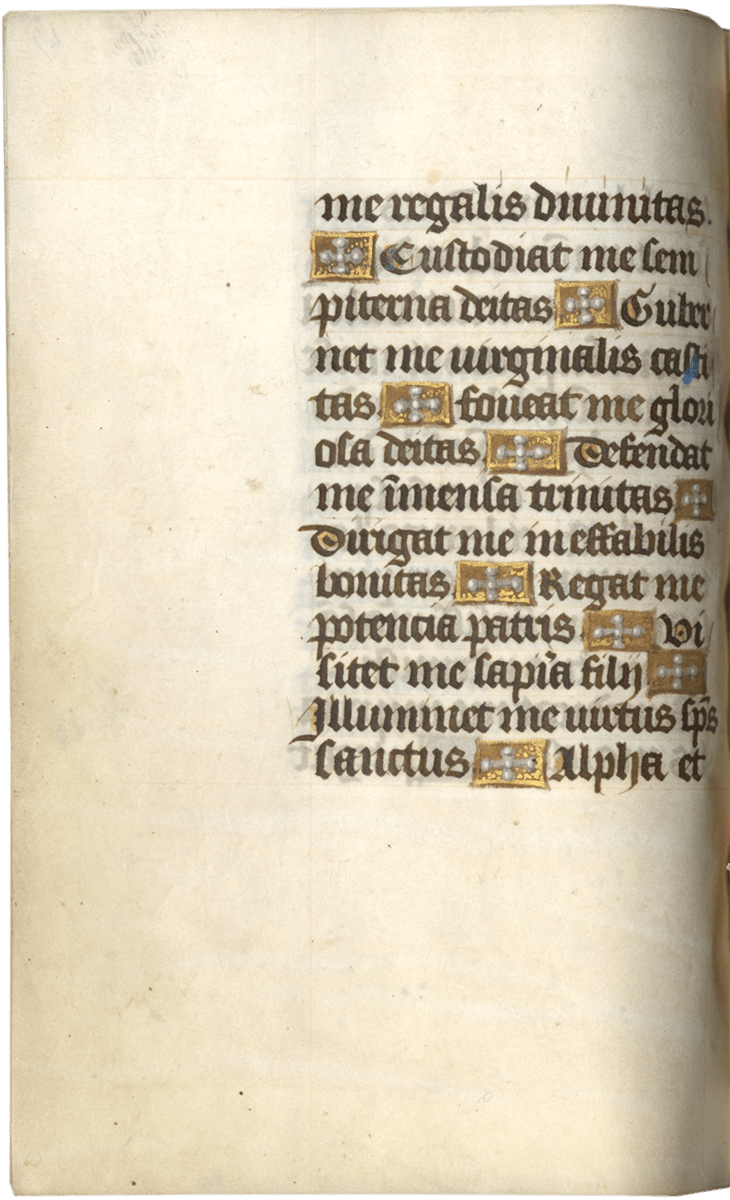
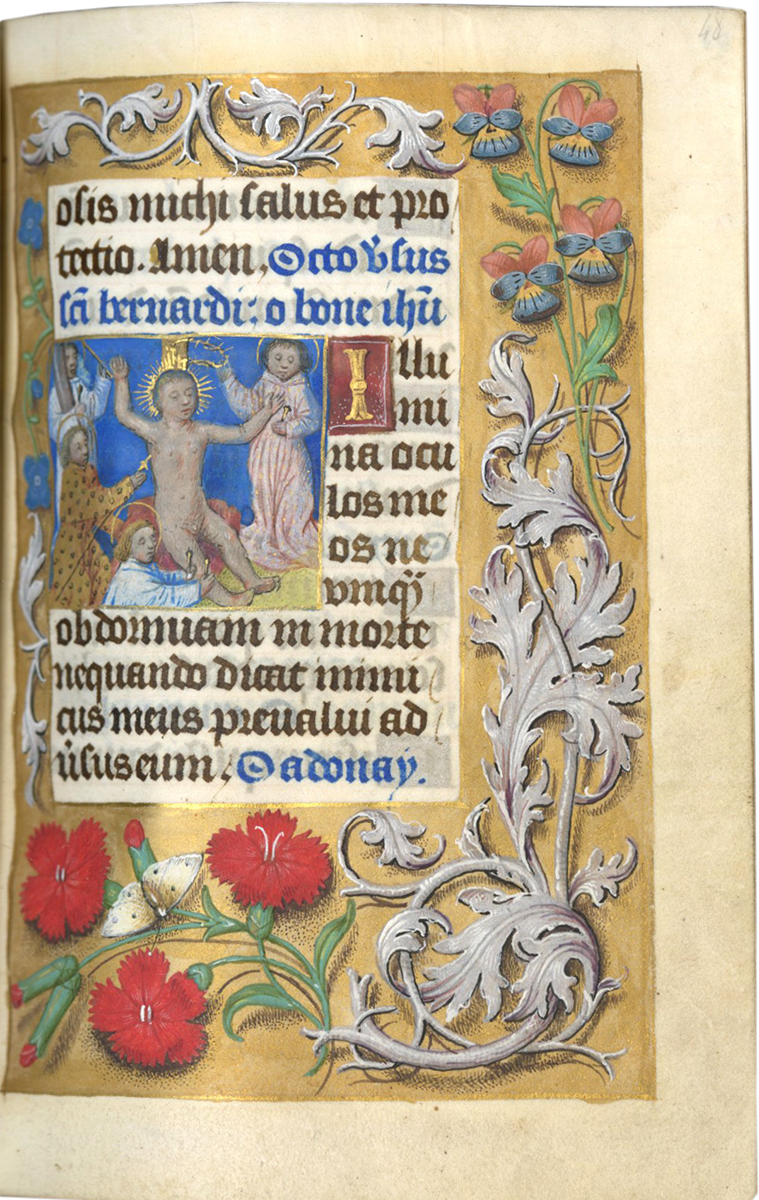

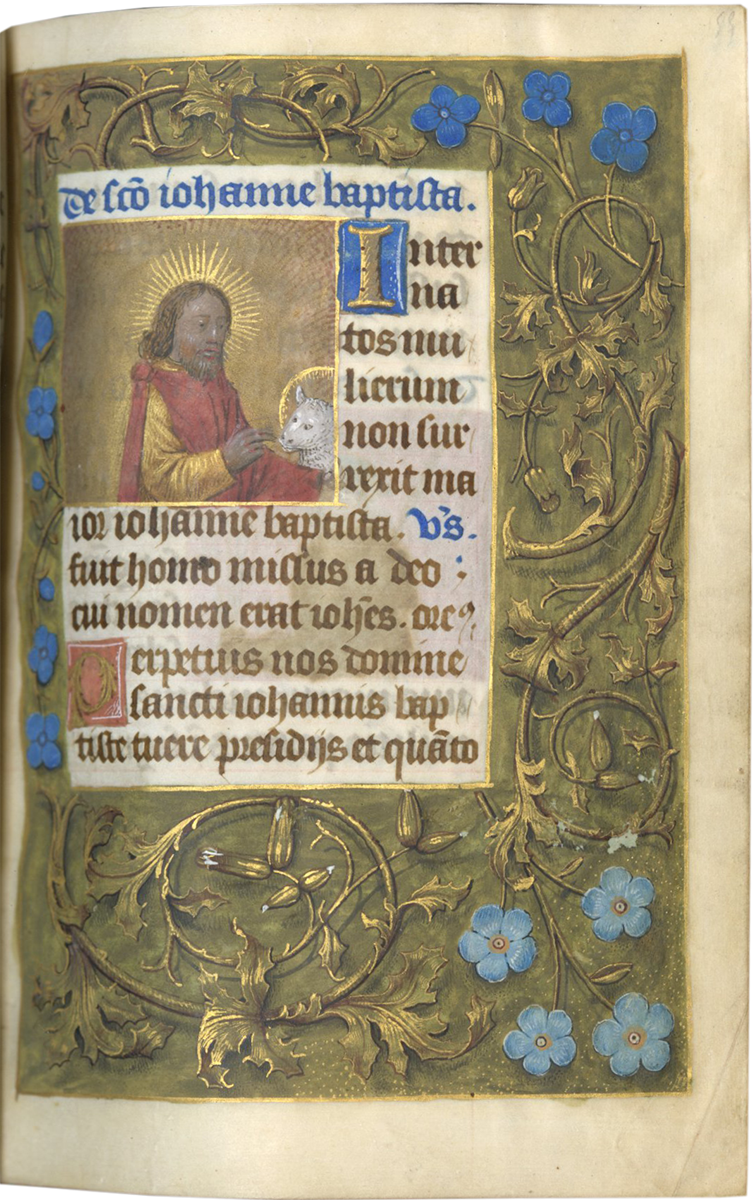
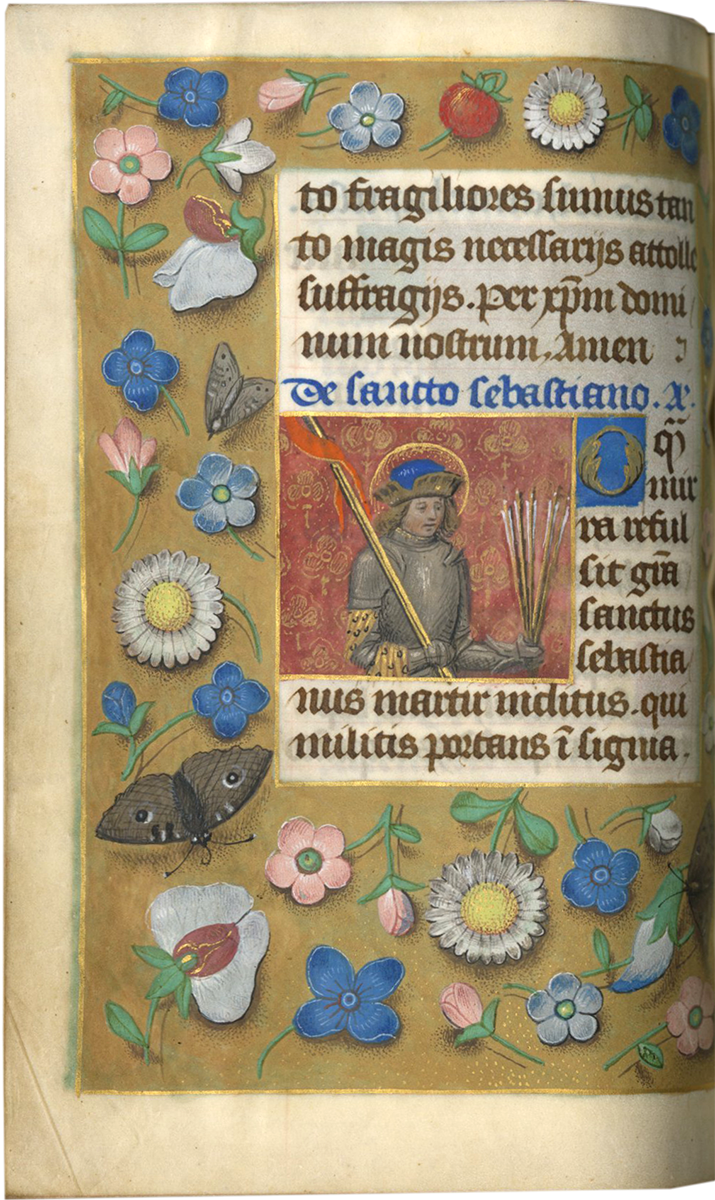

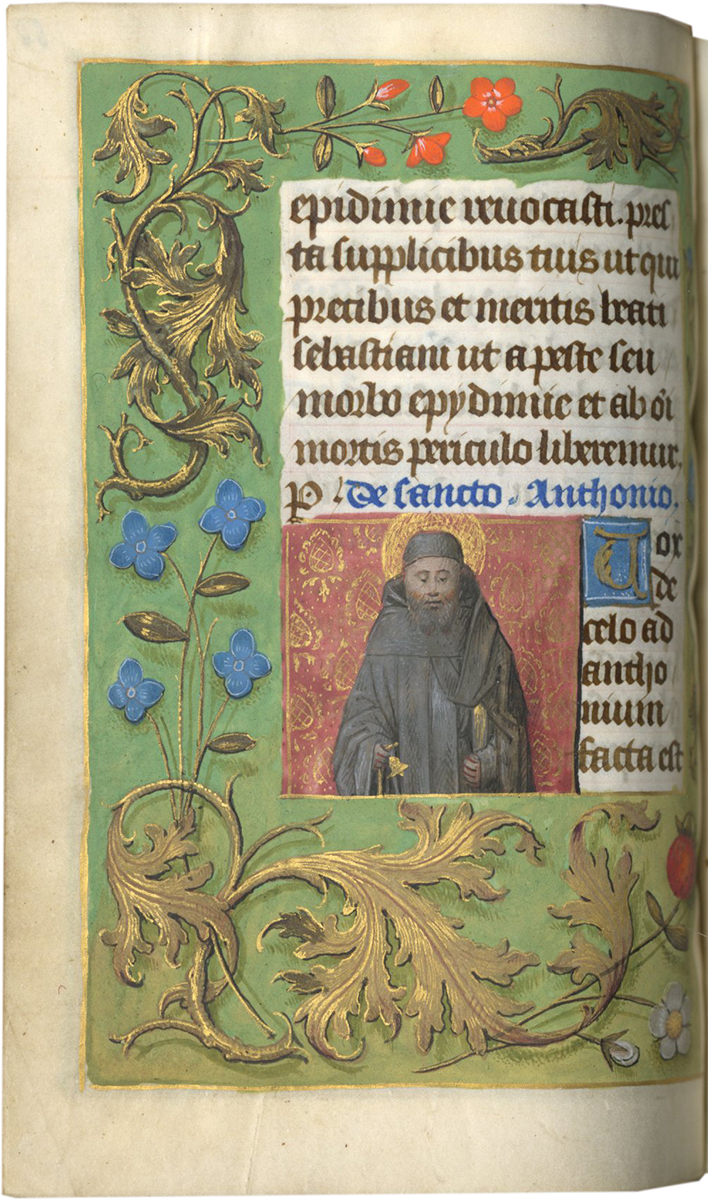
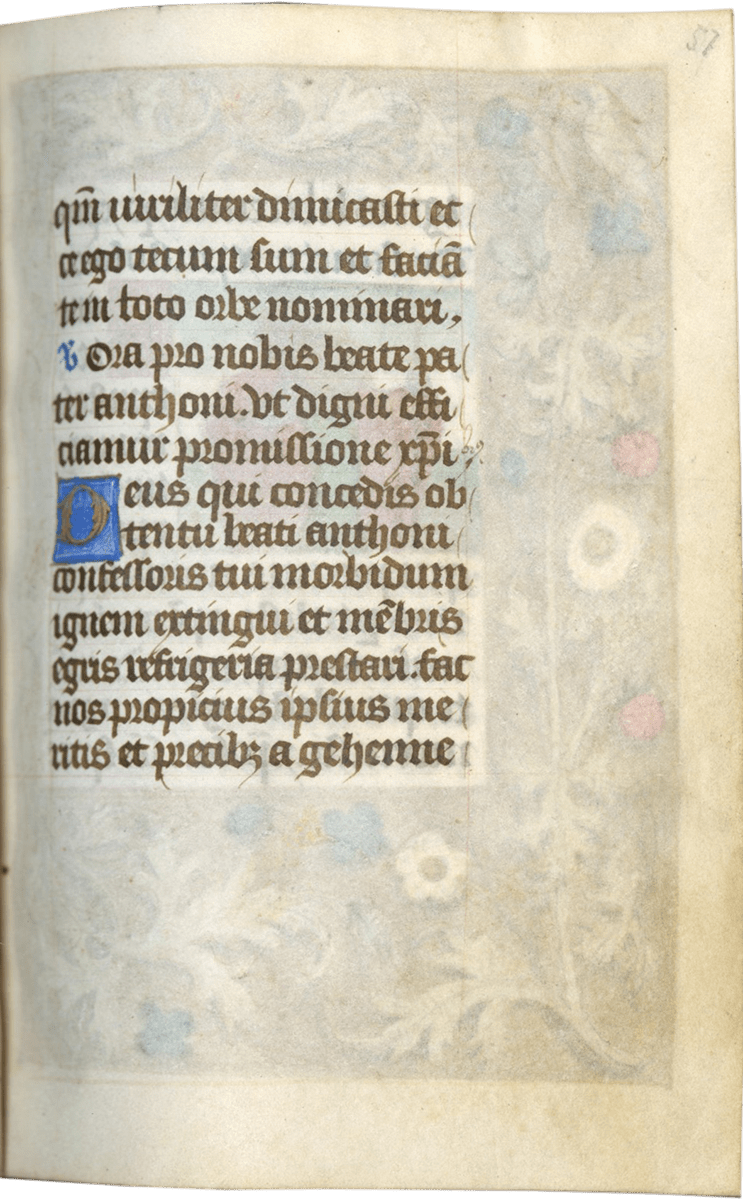


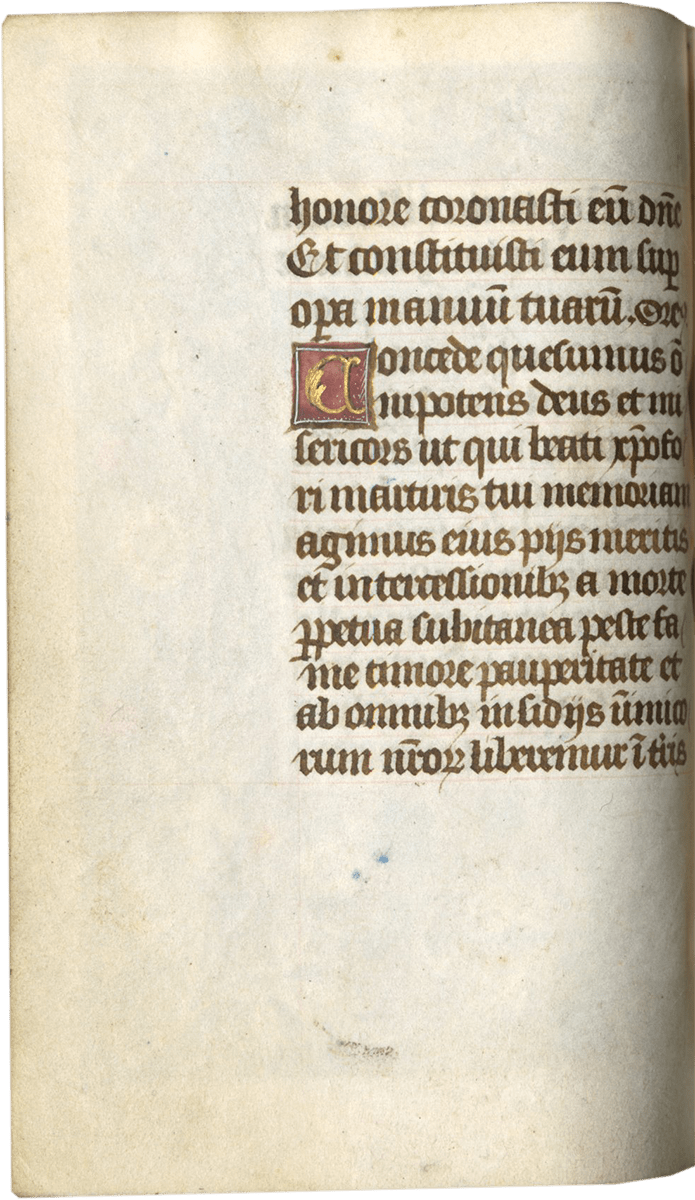
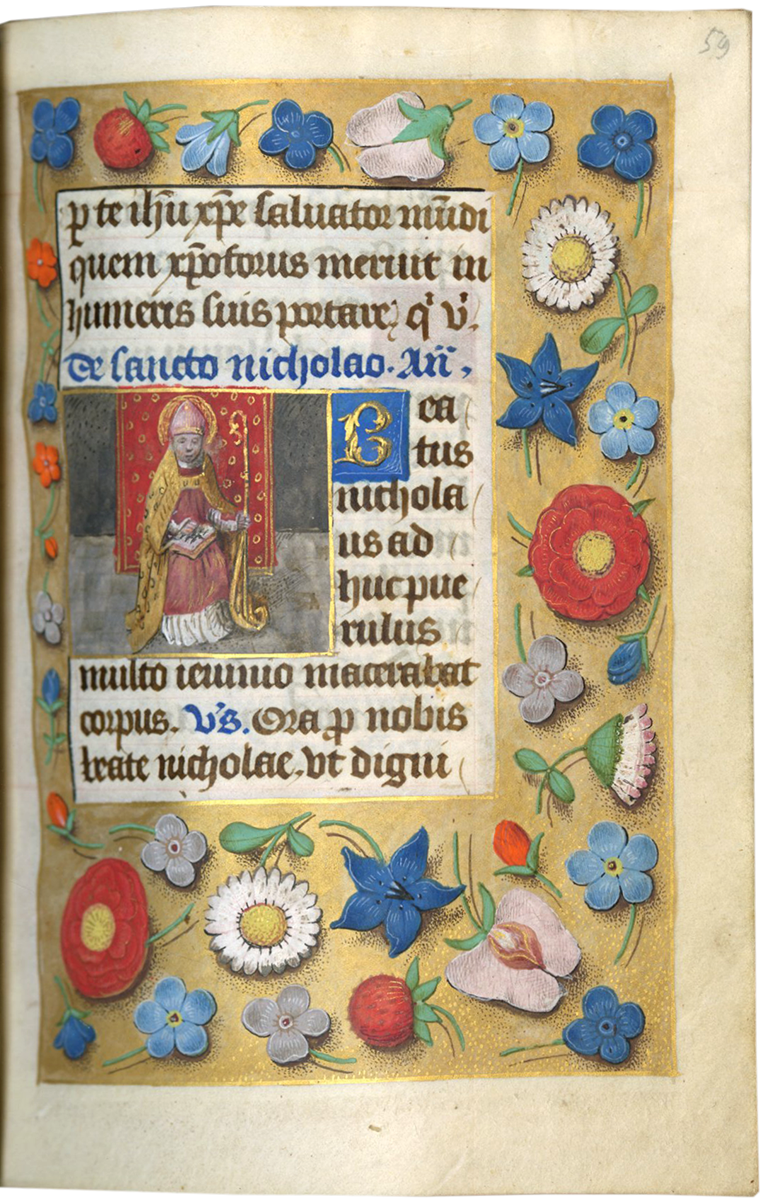
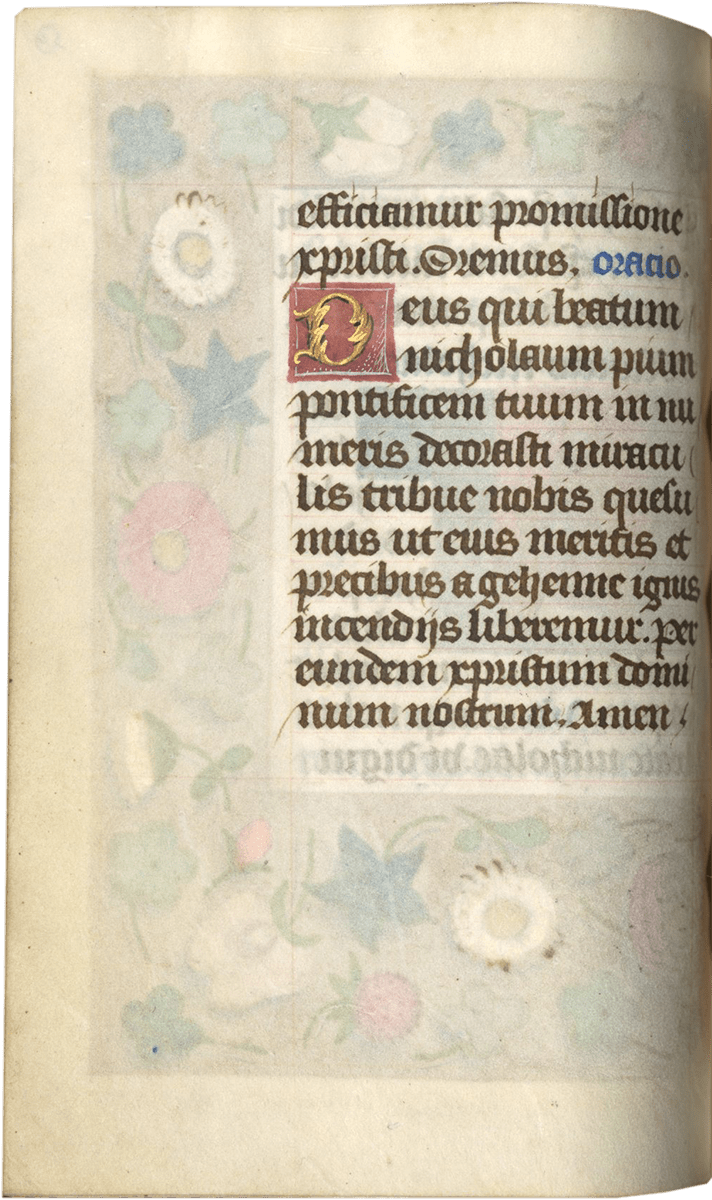
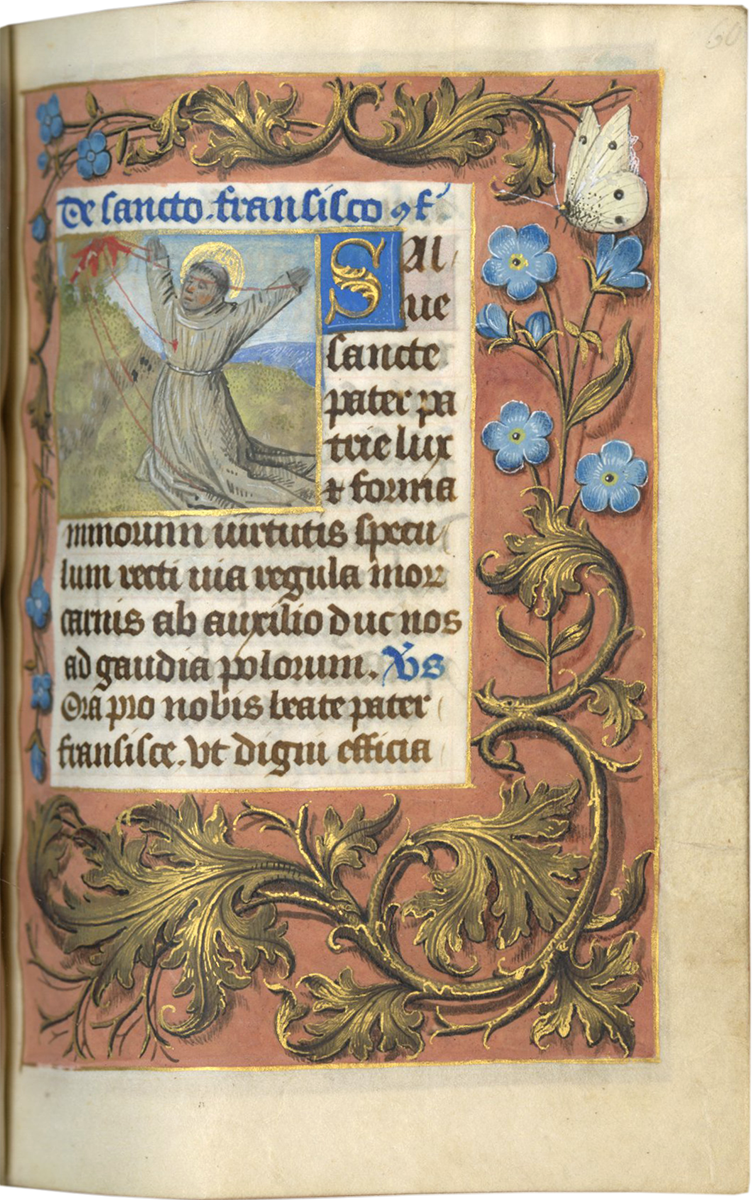
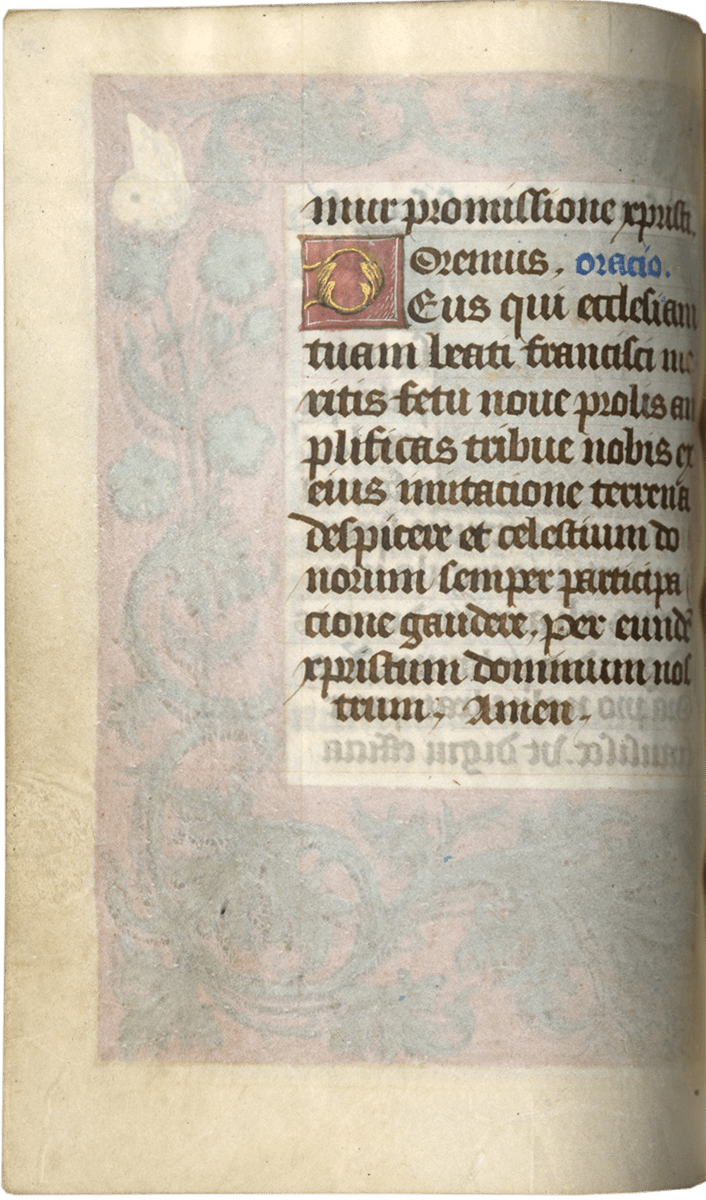

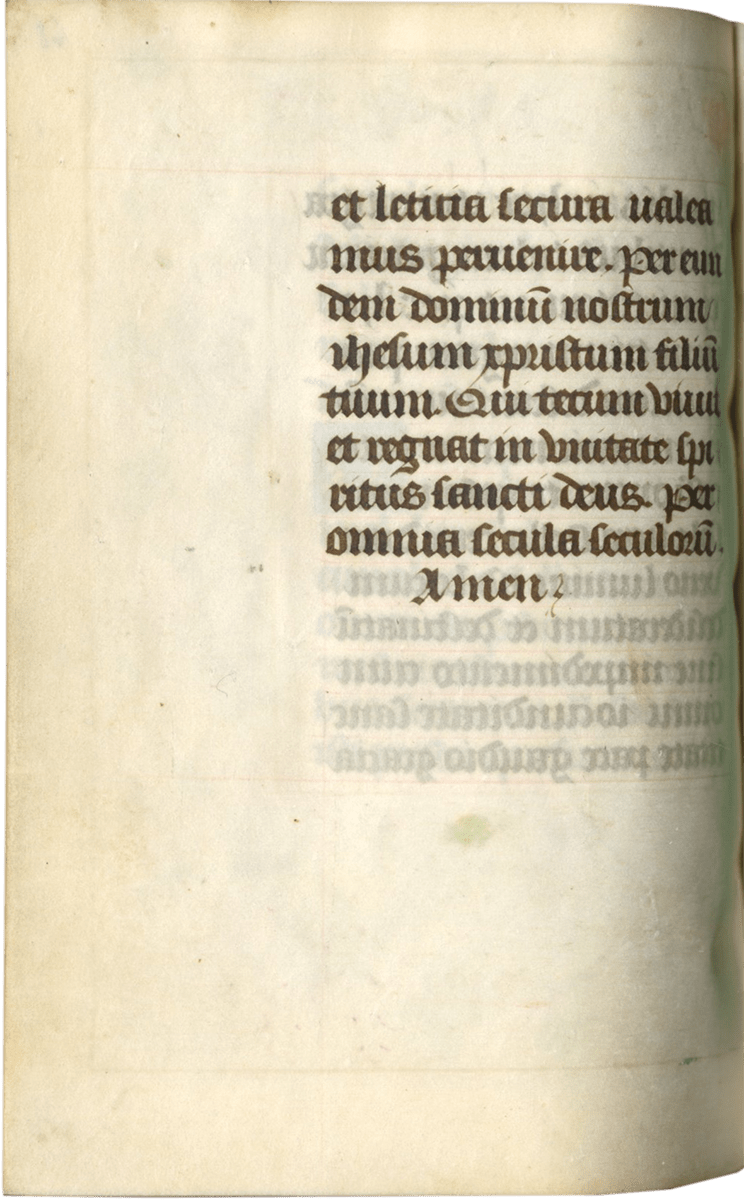

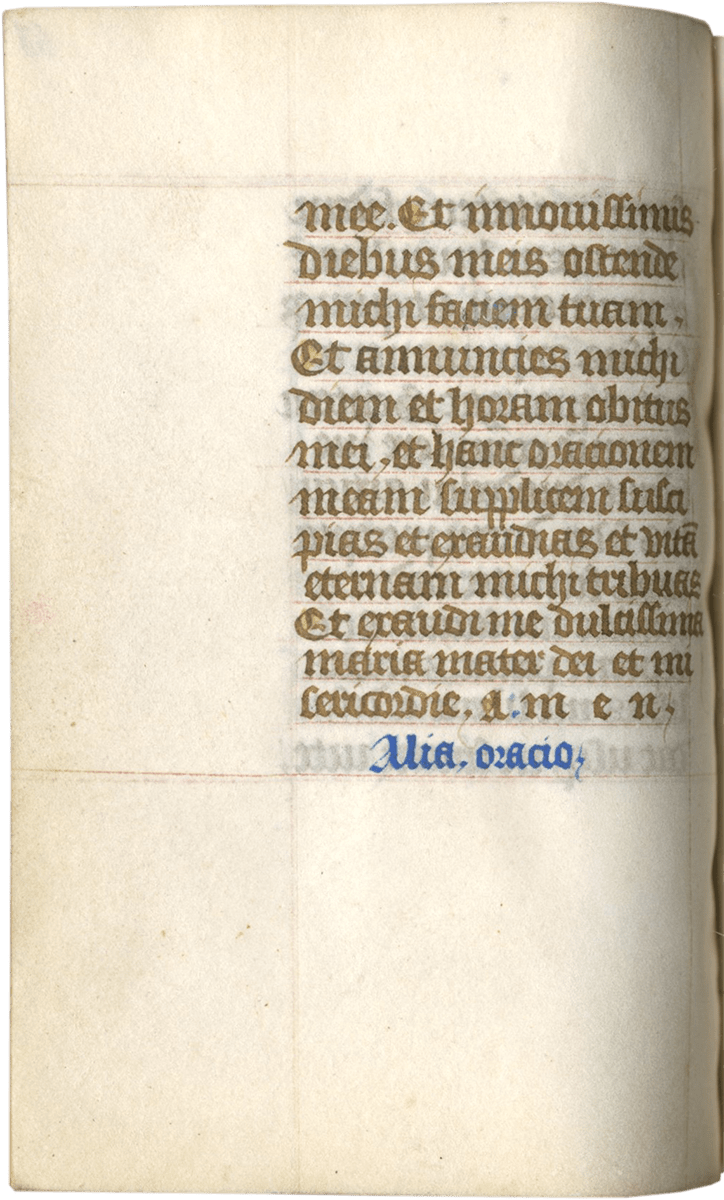

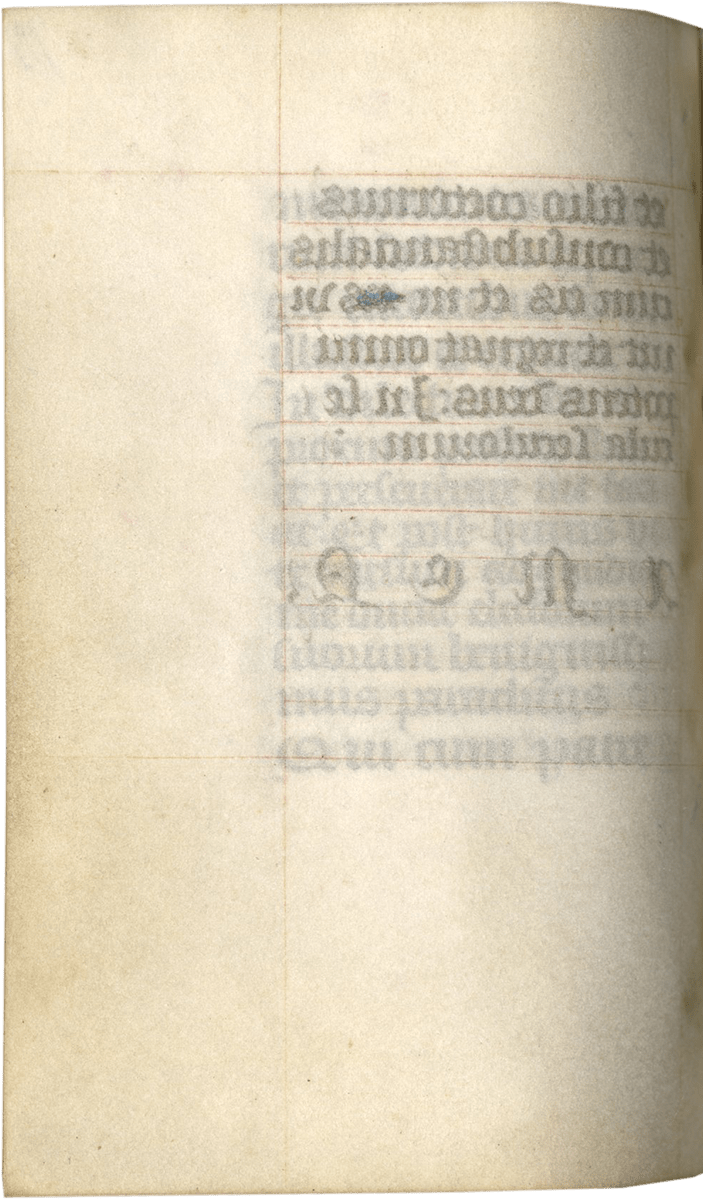
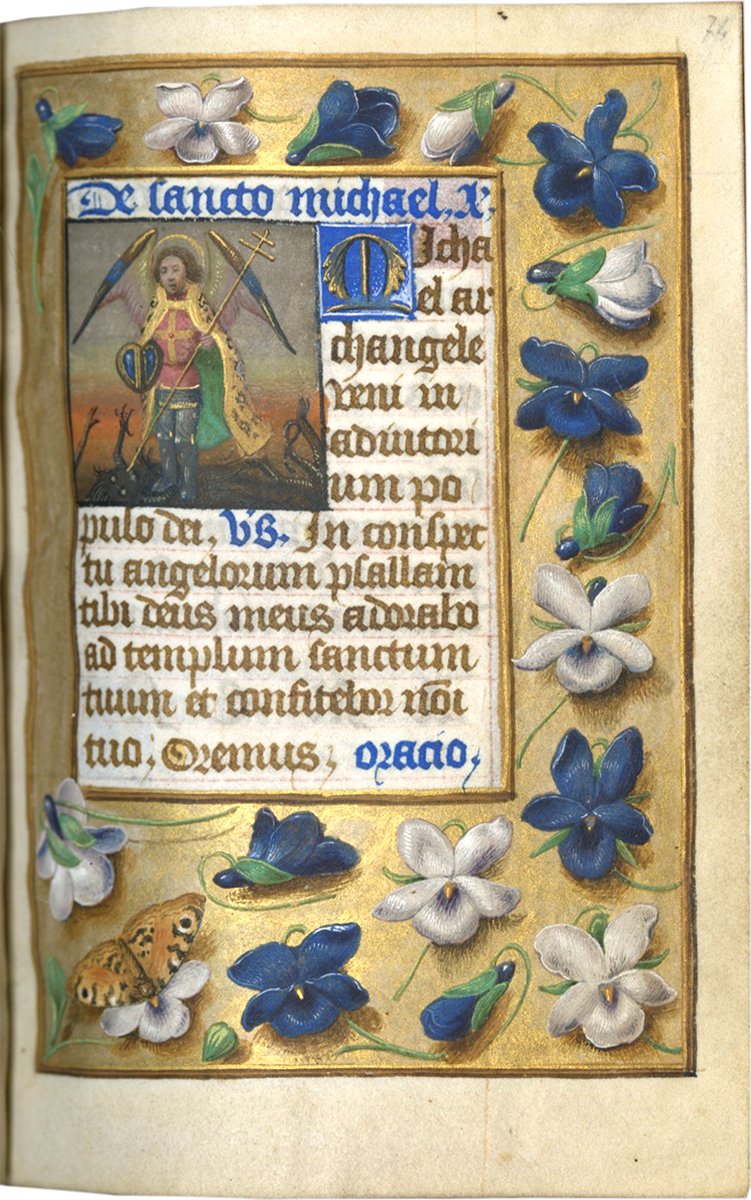



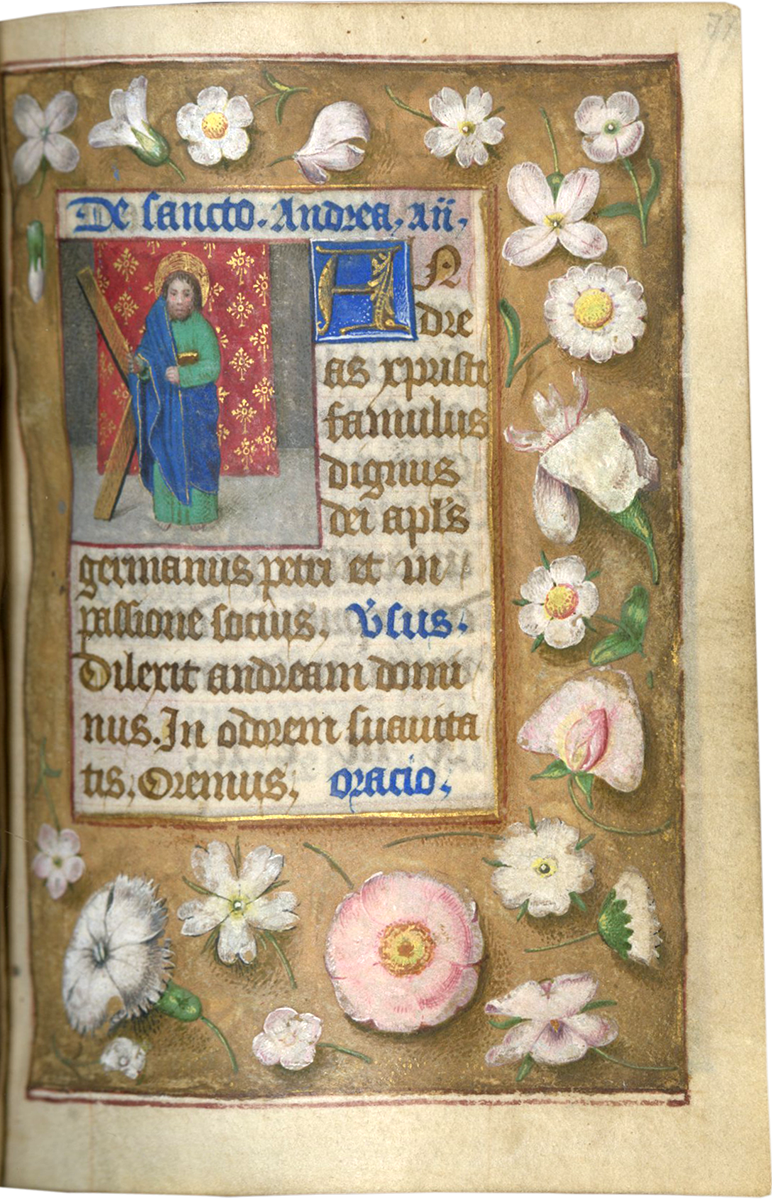
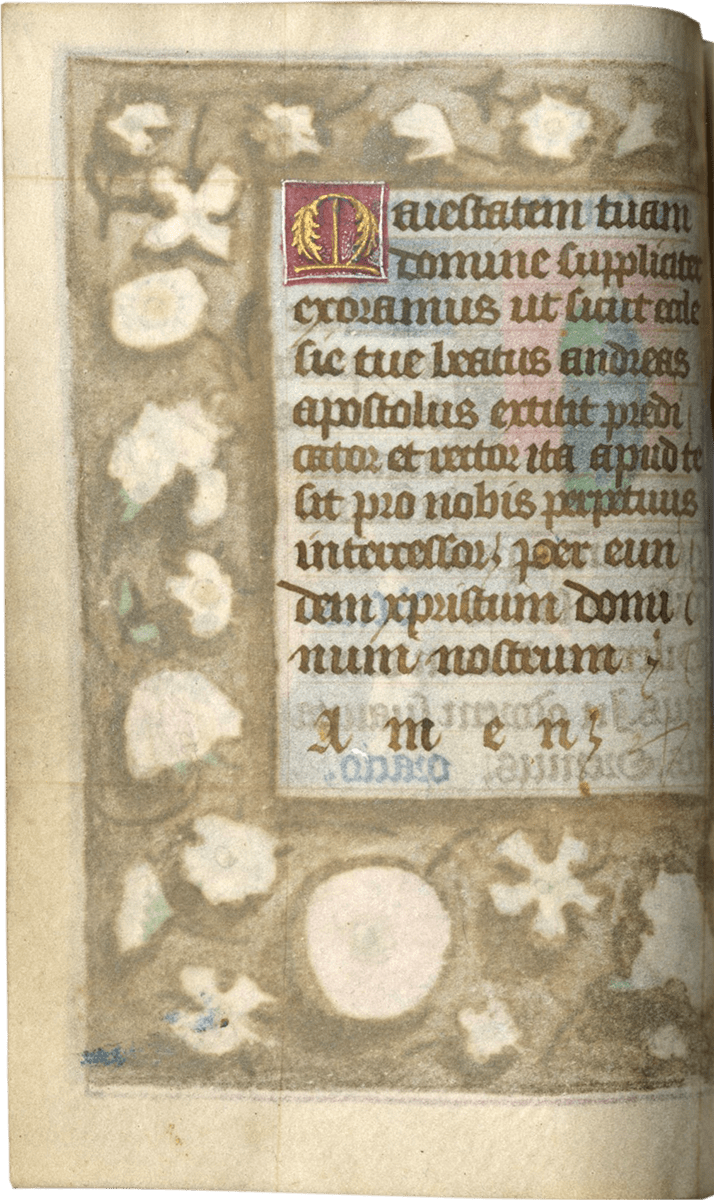
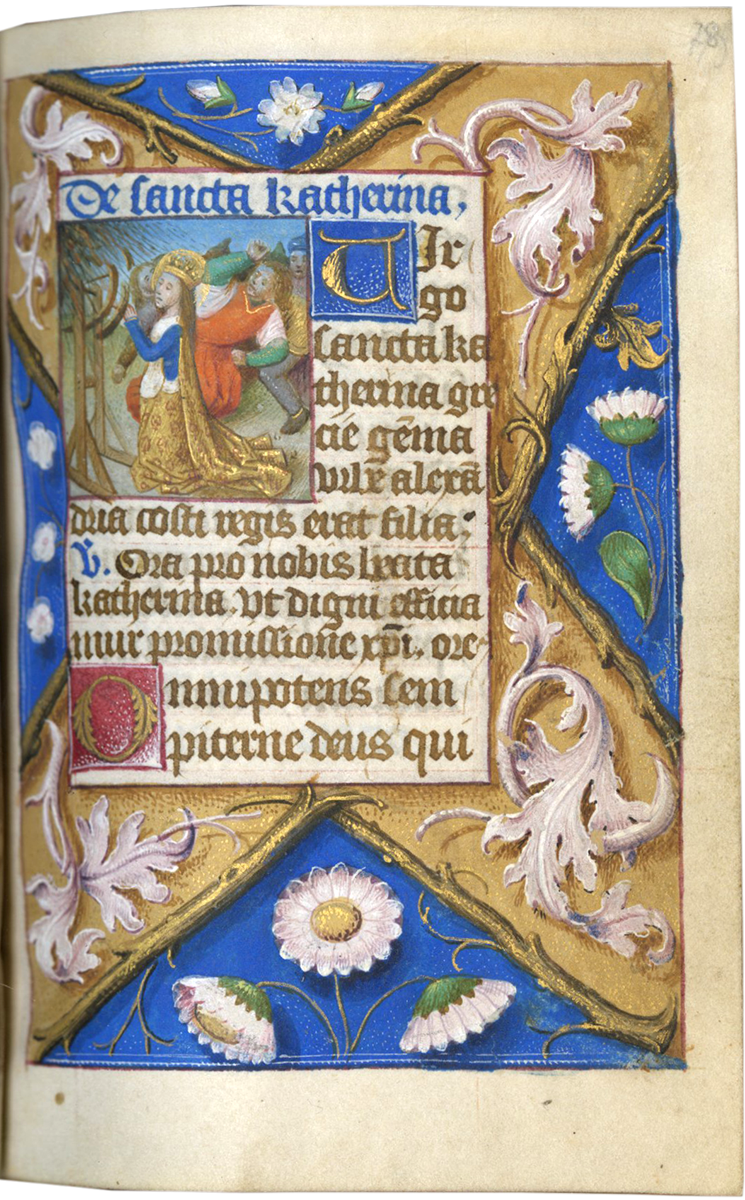
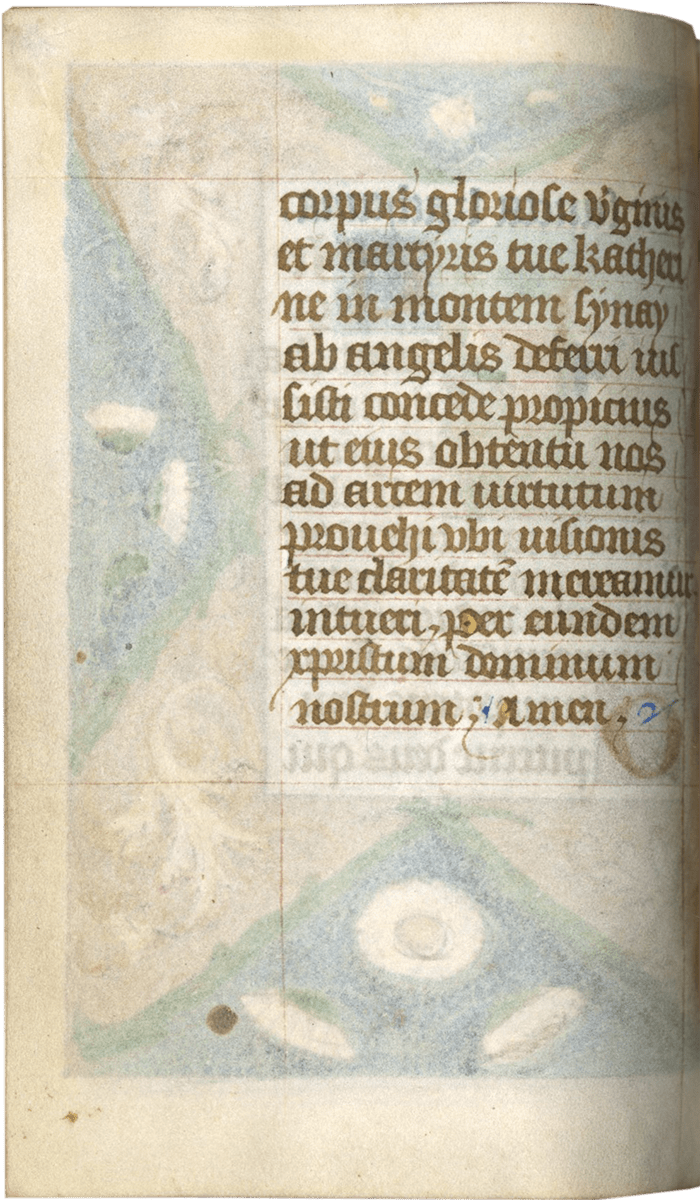
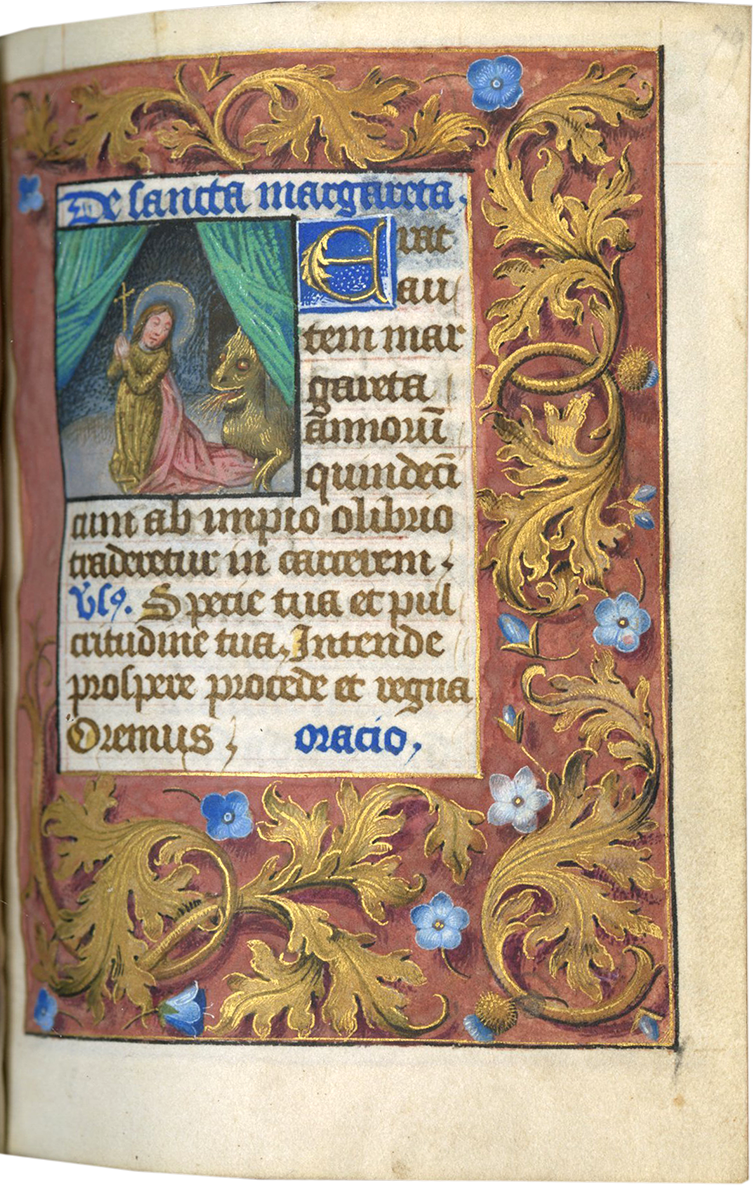

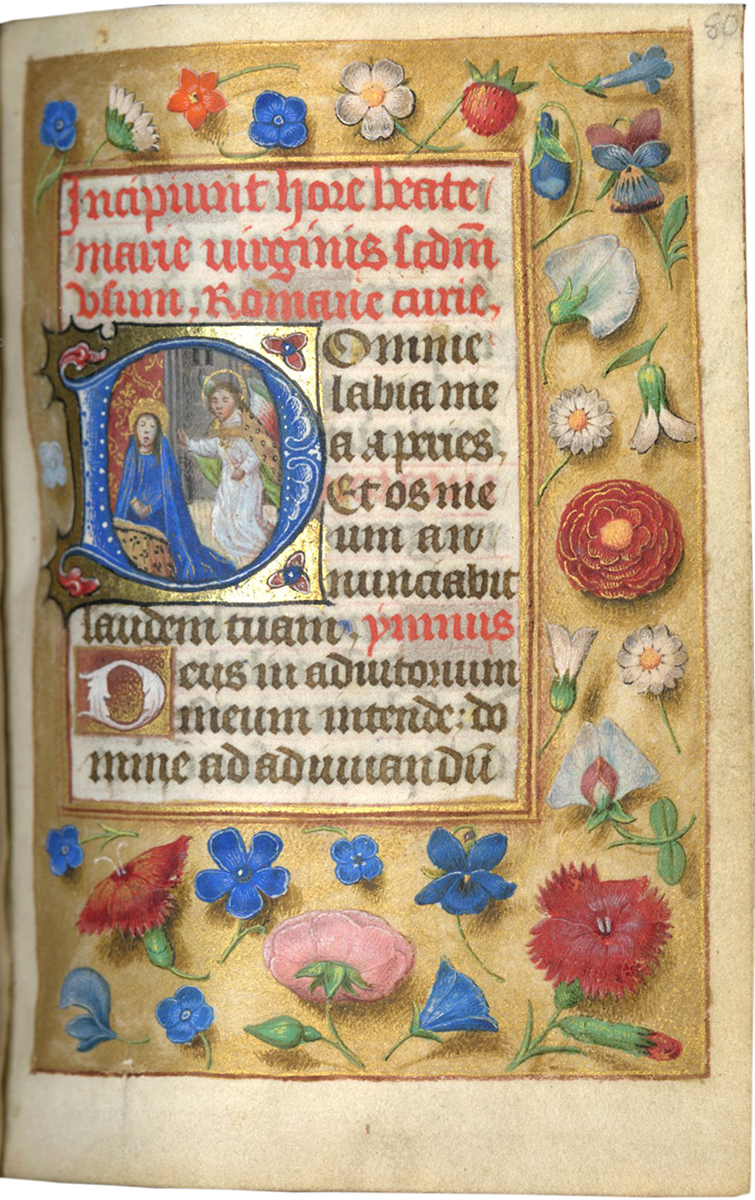

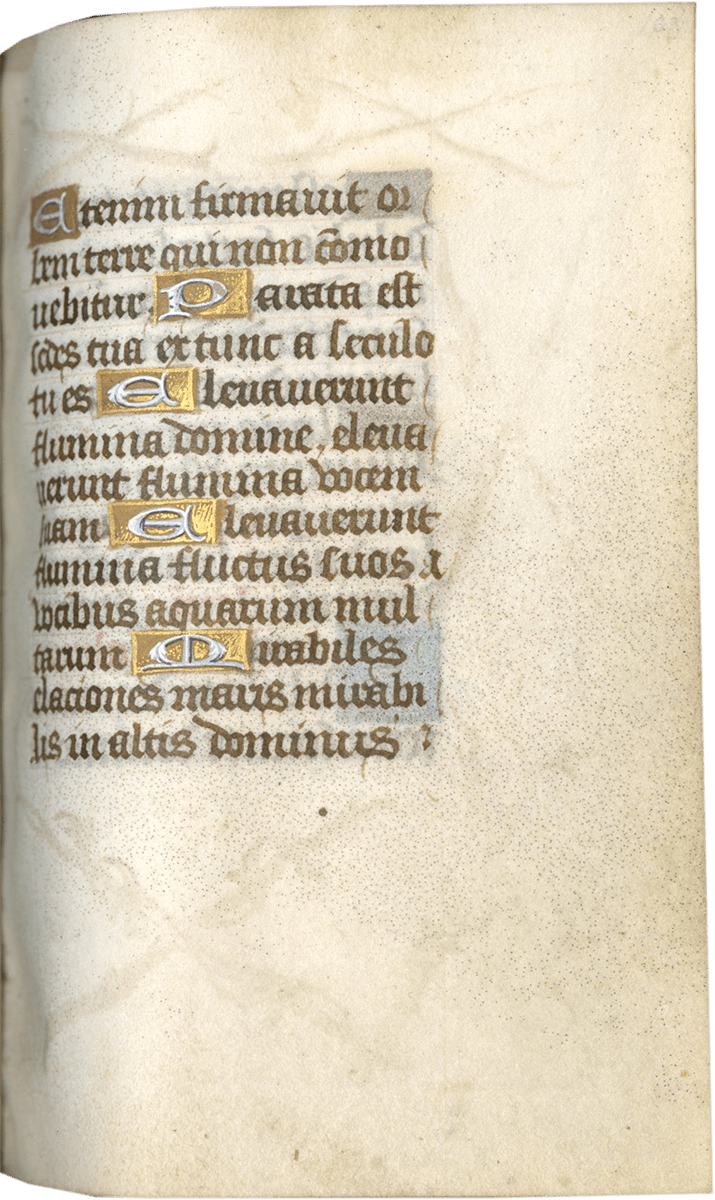
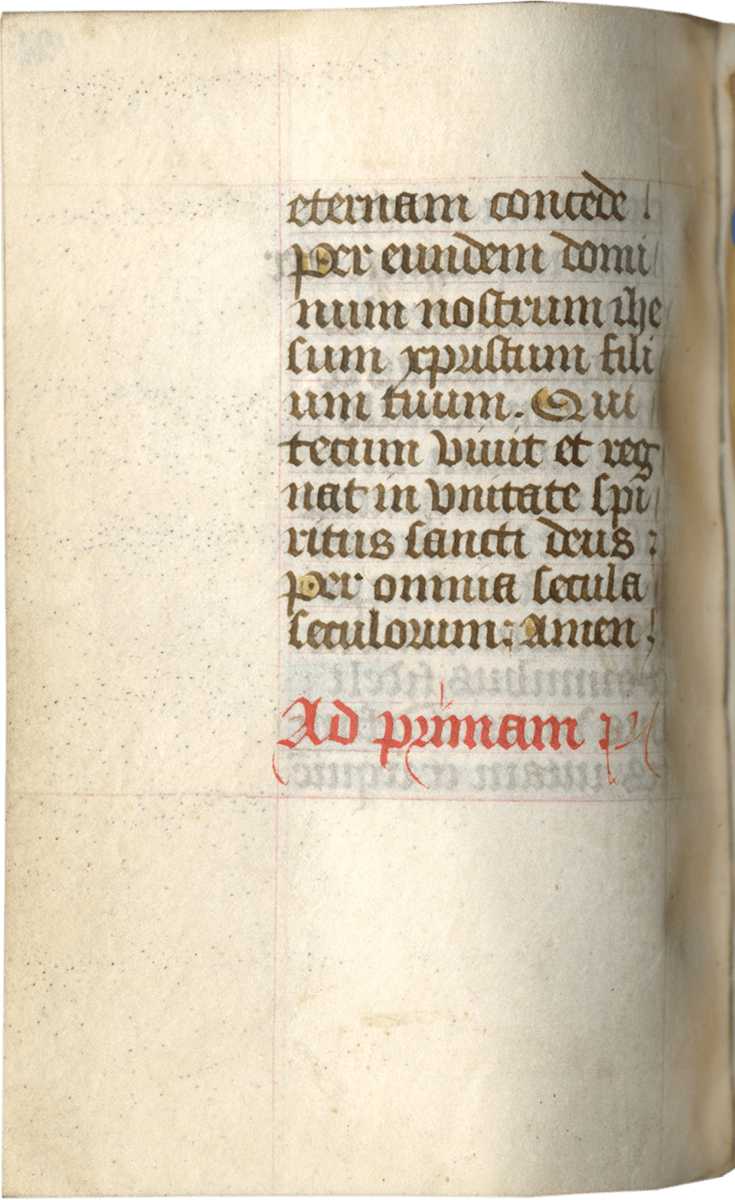

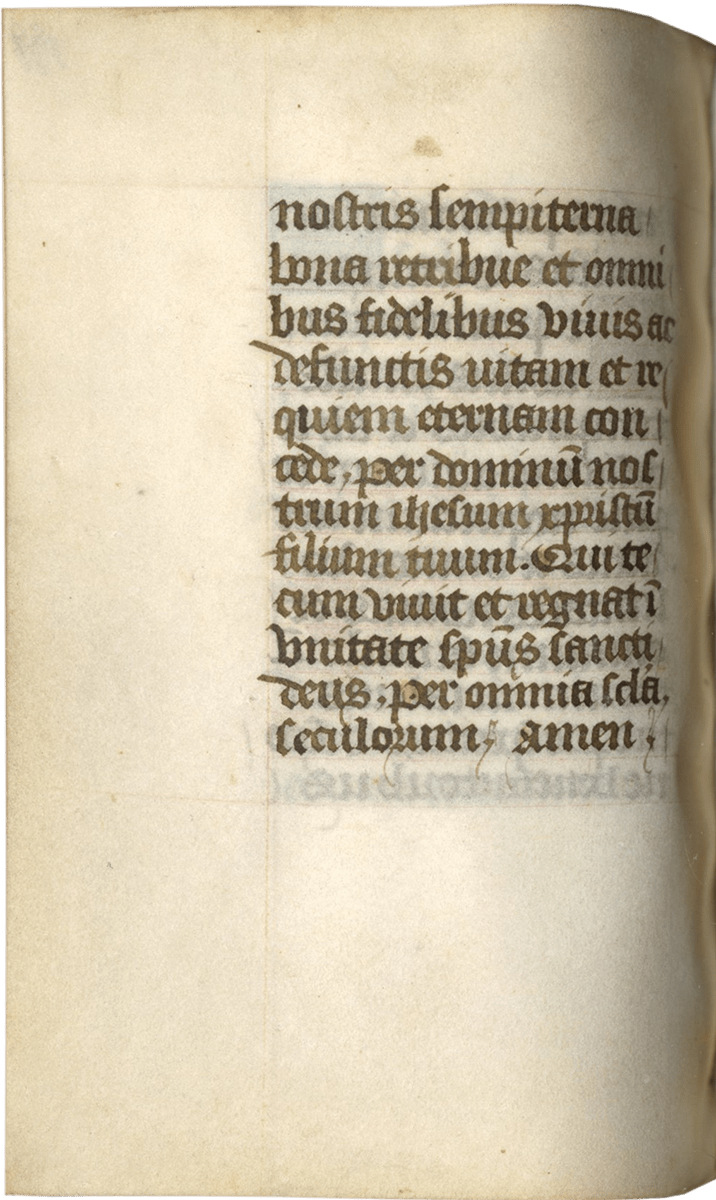
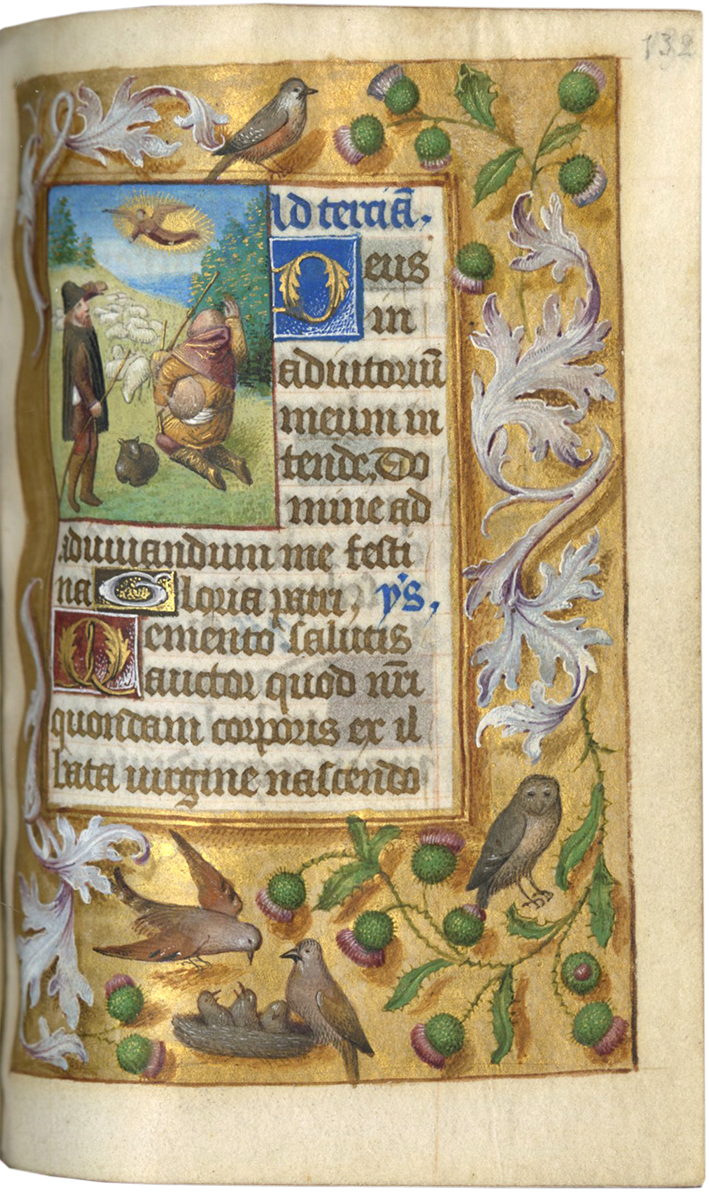
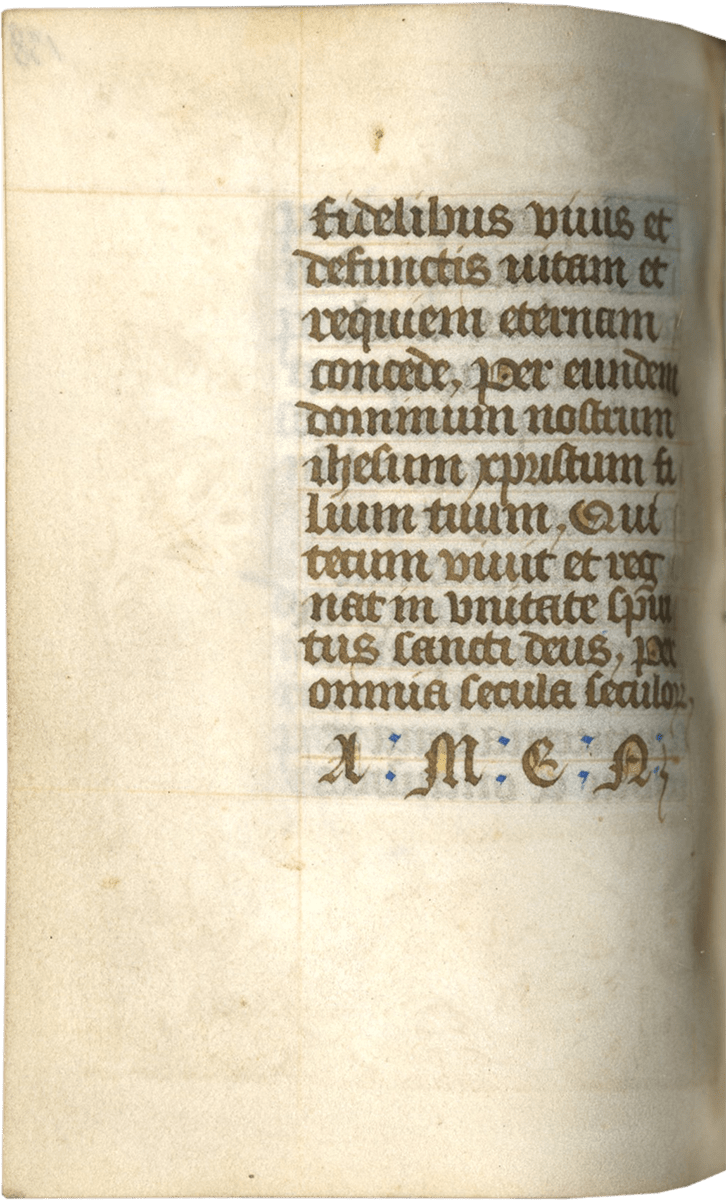


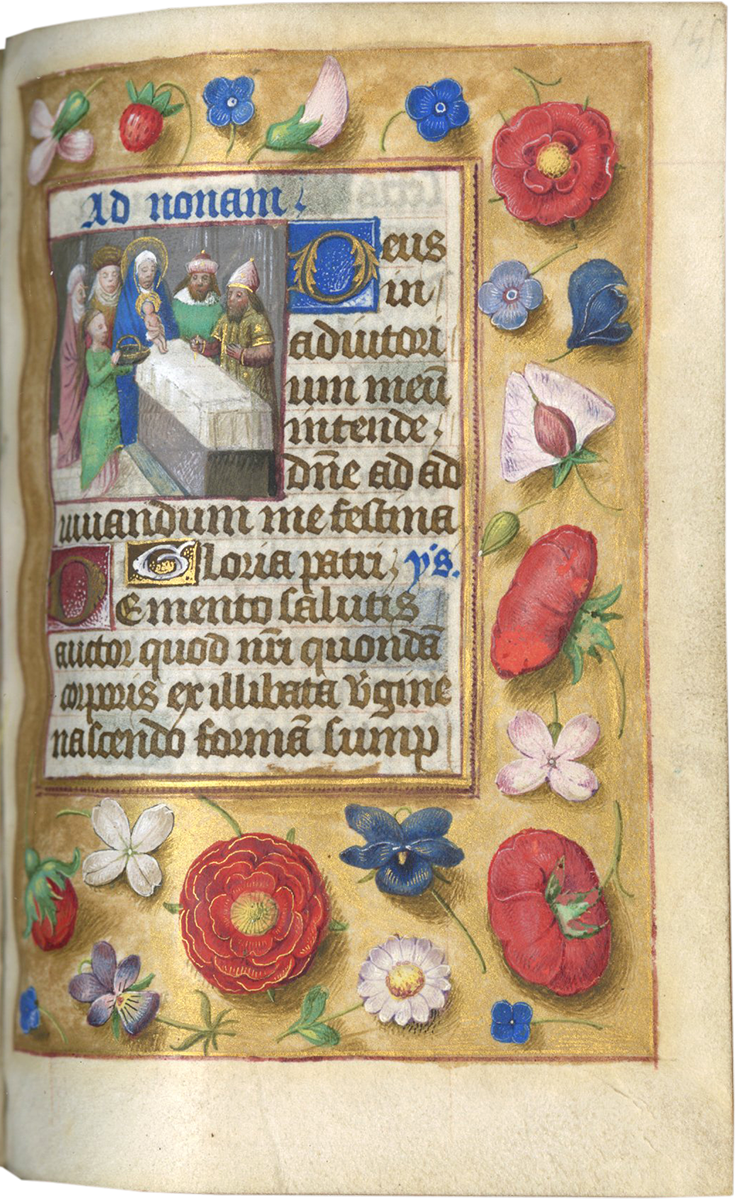

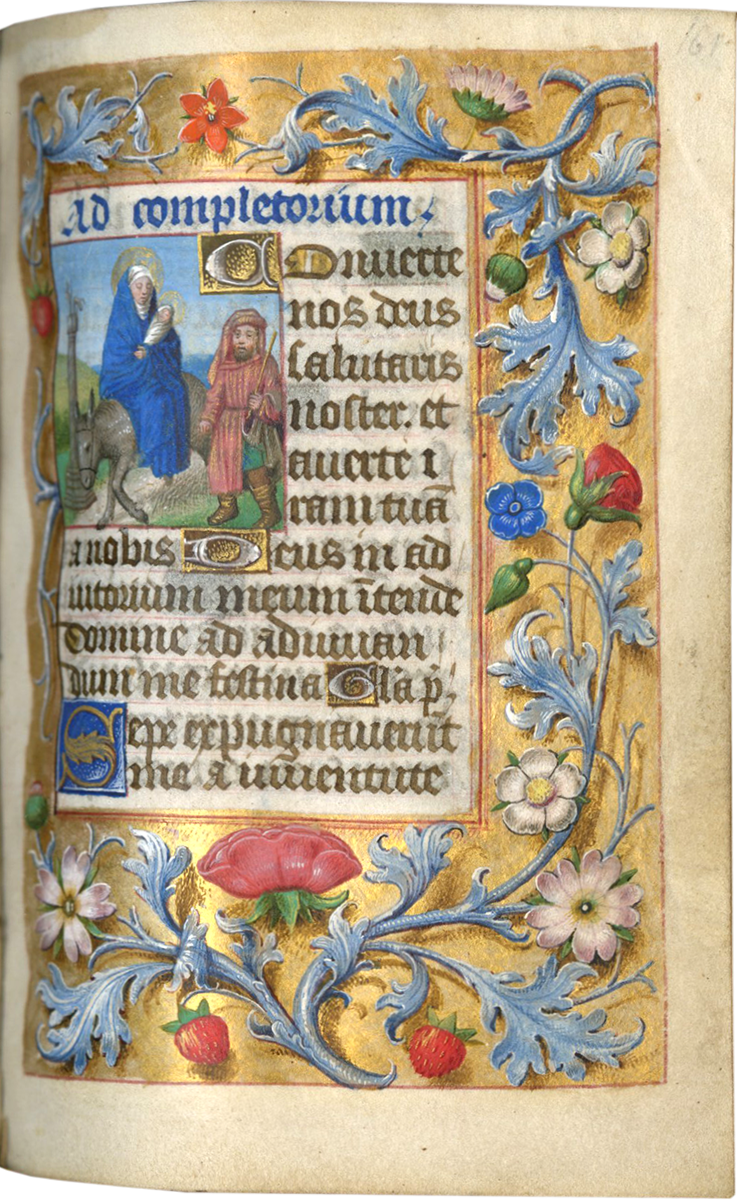
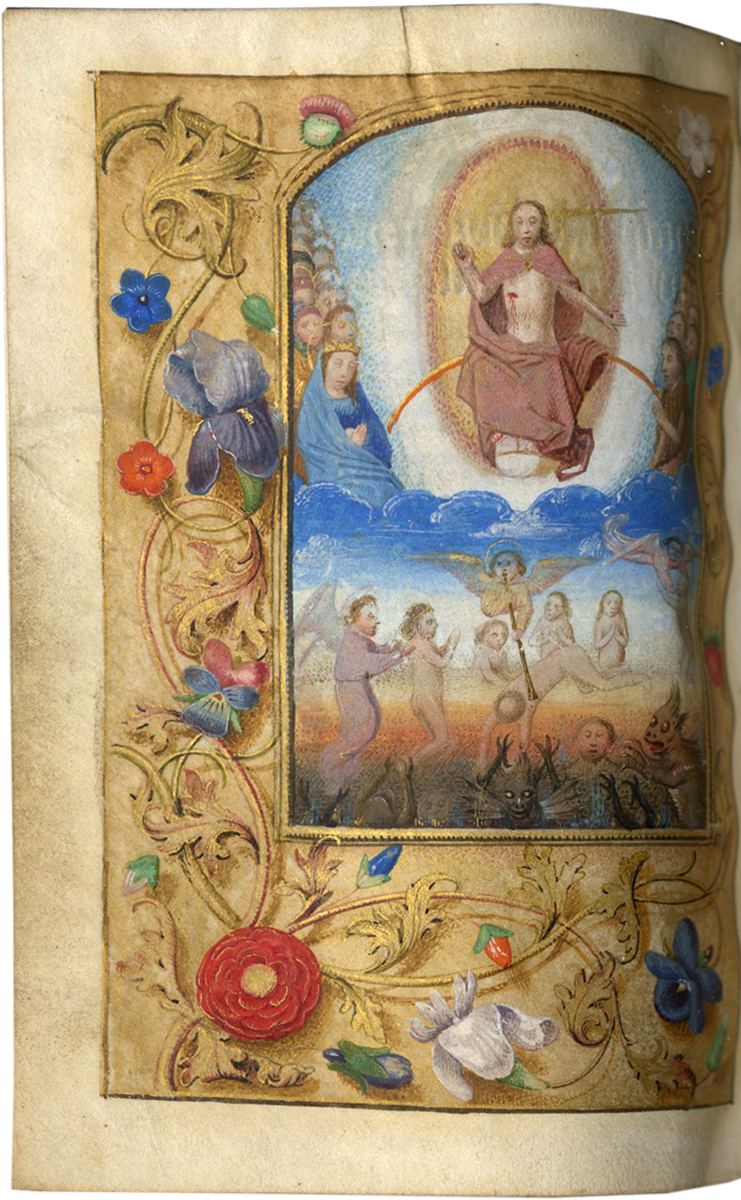


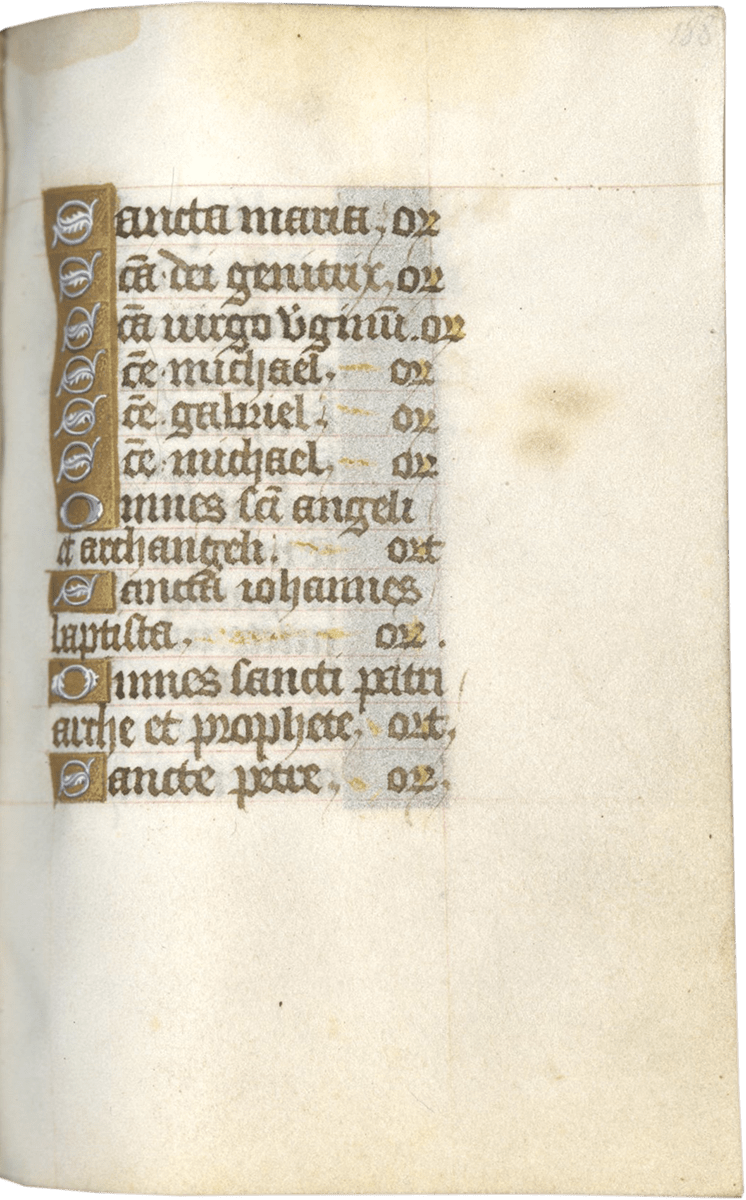




Description
This beautifully illuminated book of hours was made for use in the region of Marchiennes in Hainaut. The delightful miniatures are surrounded by painted borders strewn with branches and naturalistic flowers, berries, insects and birds. The illumination may be attributed to the Master of Marguerite de Liedekerke, an artist who is less known in modern scholarship than his contemporary, the Master of Antoine Rolin, but appears in his time to have enjoyed equal appreciation from clients. His art, which deserves further study, will enable us to understand more fully how illumination developed in Hainaut at the end of the fifteenth century after Simon Marmion (1425-1489) had passed from the scene.
ii (nineteenth-century parchment) + 285 + ii (nineteenth-century parchment) folios on parchment, modern foliation in pencil, 1-285, lacking four leaves with small miniatures and three or more full-page miniatures on singletons (collation: i-ii6 iii8 iv8 [+2, a miniature, f. 22, inserted] v-ix8 x8 [+7, a miniature, f. 76, inserted] xi-xxi8 xxii8 [+4, a miniature, f. 170, inserted] xxiii-xxiv8 xxv8 [+8, a miniature, f. 199, inserted] xxvi-xxxv8 xxxvi5), no catchwords or signatures, ruled in brown and red inks (justification 52 x 36 mm.), written in brown ink in gothic textualis bookhand on 13 long lines, red and blue rubrics, capitals touched in yellow, 1-2-line initials in white on brown grounds overpainted with liquid gold, very fine 2-line initials in liquid gold or in blue with white penwork on grounds in blue or dark pink with penwork in liquid gold or white, one 3-line initial resembling a branch in brown on dark pink ground, one 4-line initial and one 6-line initial in blue with white penwork infilled with red with penwork in liquid gold and on grounds in liquid gold (the ground of the 6-line initial decorated with four red dots), 27 small miniatures (6 lines high), one historiated initial (6 lines high), 4 full-page miniatures, 32 full borders in Ghent-Bruges style (on pages with miniatures) with naturalistic birds, butterflies, branches, strawberries, flowers, and acanthus leaves on grounds painted in liquid gold, blue, green, dark pink, gray, or olive green, edges gilt, in exceptionally pristine condition. Bound at the end of the nineteenth century in Brussels by Laurent Claessens (1828-1909; binding signed “L. Claessens”) in a magnificent mosaic binding, covers with black and lemon leathers inlaid in an interlaced pattern in red morocco, the inlaid motifs with gilt outlines, flat spine with a decor featuring similar inlaid mosaic compartments enclosing a title in gilt “HORE DE SANCTA MARIA,” inside the covers laid with dark blue morocco decorated with an interlaced frame enclosing a field scattered with fleur-de-lys, case in red morocco entitled on the spine in gilt “HORE DE SANCTA MARIA,” points of inlaid foliage very slight detached on the spine, in excellent condition. Dimensions 107 x 70 mm.
Provenance
1.The manuscript includes two coats of arms. The arms painted in the lower margin on f. 30, in the beginning of the Mass of the Virgin, are those of the Farvacques family. Another coat of arms, belonging to a married woman, is painted in the lower margin under a miniature of St. Andrew on f. 76v. The arms are parti, dexter d'or à un ours colleté au naturel et une étoile d'azur en chef; sénestre de gueules à un bateaux au naturel et une étoile d'azur en chef (unidentified). Below the arms is painted a banderole with the motto “Oft mochte zu(de)m” (Often also liked).
The calendar includes in blue St. Rictrude of Marchiennes (7 Feb), which together with the inclusion of the feast of St. Benedict in blue (11 July) suggests that the manuscript was made for use in the region of the Benedictine Abbaye Sainte-Rictrude et Saint-Pierre de Marchiennes. The Abbey is located in the commune of Marchiennes in northern France between Lille, Tournai, Douai and Valenciennes. The Farvacques family, whose arms were painted on f. 30, originated in the town of Tournai. Notably, St. Eusebius, who is also included in blue in the calendar (16 Mar), was venerated in the commune of Saint-Amand-les-Eaux in the diocese of Tournai, located some 13 kilometers from the Abbey of Marchiennes and the same distance from Valenciennes (cf. Calendoscope).
Other local saints in the calendar include St. Aldegonde of Maubeuge (30 Jan), St. Silvinus, bishop of Morins in the diocese of Thérouanne (17 Feb), and St. Bertin (5 Sept). Important for the original owners was also St. Denis of Paris (9 Oct), included in blue in the calendar.
Moreover, the manuscript can be localized stylistically in Valenciennes in Hainaut by the feathering on the initials and, above all, by the miniatures that can be attributed to the Master of Marguerite de Liedekerke, an illuminator whose clients, collaborators and style belong to this region (see below).
2. Private European Collection.
Text
ff. 1-12v, Calendar in Latin;
ff. 13-21, Hours of the Cross; f. 22, blank, f. 22v, miniature;
ff. 23-29v, Hours of the Holy Spirit, beginning imperfectly at the end of Matins with the antiphon “(Veni sancte spiritus reple tuorum corda fidelium et tui) amoris meis ignem accende,” lacking the first leaf;
ff. 30-37v, Mass of the Virgin, “Missa de sancta Maria;”
ff. 38-44v, Gospel sequences, beginning imperfectly in the middle of the Gospel of St. John, “(Erat lux vera, qui illumi)nat omnen hominem, venientem in hoc mundum,” lacking the first leaf;
ff. 45-48, Passion of Christ according to St. John, beginning imperfectly, “(...) ergo me queritis sinite hos. abire. dixit ihesus quem queritis...,” lacking the first leaf;
ff. 48-54v, Eight verses of St. Bernard, followed by prayers, beginning with the Marian prayer “Mater digna Dei...” and ending with a prayer of St. Bernard “Domine Deus meus...;”
ff. 55-62v, Suffrages for St. John the Baptist, St. Sebastian, St. Anthony, St. Christopher, St. Nicholas, St. Francis, and the Three Kings;
ff. 63-68v, Obsecro te (masculin forms);
ff. 69-73, O intemerata; f. 73v, ruled, otherwise blank;
ff. 74-78v, Suffrages to St. Michael, St. Peter and St. Paul, St. Andrew, St. Catherine, and St. Margaret;
ff. 80-169v, Hours of the Virgin, use of Rome: Matins (ff. 80-107), Lauds (ff. 107v-124v), Prime (ff. 125-131v), Terce (ff. 132-138v), Sext (ff. 139-144v), None (ff. 145-150v), Vespers, beginning imperfectly, lacking the first leaf (ff. 151-160v), Compline (ff. 161-169v); f. 170, blank, f. 170v, miniature;
ff. 171-187, Penitential Psalms;
ff. 187v-198v, Litanies, followed by petitions and prayers; f. 199, blank, 199v, miniature;
ff. 200-269v, Office of the Dead, use of Rome;
ff. 270-275, Prayer in Latin “Dulcissime Ihesu Christe verus Deus...;”
ff. 275v-280v, Athanasian Creed;
ff. 281-285v, Prayer on the Passion of Christ, “Cultur (Culter) qui circumcidisti (circumdedisti) sacrosanctam carnem Christi...” (also found in a book of hours of 1499, Zürich, Zentralbibliothek, MS Rh 156).
Illustration
Four full-page miniatures (on inserted singletons):
f. 22v, Pentecost (Hours of the Holy Spirit);
f. 76v, Saint Andrew, with an unidentified coat of arms (Suffrages);
f. 170v, Last Judgment (Penitential Psalms);
f. 199, Funeral Office (Office of the Dead)
27 small miniatures (6 lines) and 1 historiated initial (6 lines):
f. 13, Agony in the Garden;
f. 30, Virgin and Child;
f. 39, St. Luke writing, with the ox;
f. 41, St. Matthew writing, with the angel;
f. 43v, St. Mark writing, with the lion;
f. 48, Christ Child nude with angels holding the Arma Christi;
f. 55, St. John the Baptist, with the lamb;
f. 55v, St. Sebastian holding arrows;
f. 56v, St. Anthony;
f. 57v, St. Christopher carrying the Christ Child;
f. 59, St. Nicholas;
f. 60, St. Francis receiving the stigmata;
f. 61, Three Kings;
f. 62, Pietà;
f. 74, St. Michael;
f. 75, St. Peter and St. Paul;
f. 77, St. Andrew;
f. 78, St. Catherine;
f. 79, St. Margaret;
f. 80, Annunciation to the Virgin (historiated initial “D”);
f. 107v, Visitation;
f. 125, Nativity;
f. 132, Annunciation to the Shepherds;
f. 139, Adoration of the Magi;
f. 145, Presentation in the Temple;
f. 161, Flight to Egypt;
f. 171, David in prayer
f. 200, Mass;;
The painting of the miniatures and decorated borders in this manuscript can be attributed to the Master of Marguerite de Liedekerke, an illuminator active in Hainaut c. 1482-1502. Anne-Marie Legaré has studied this artist in detail and attributed a corpus of eighteen manuscripts to him; our manuscript is not included in the corpus (Legaré 2005). Legaré names the anonymous artist after an antiphonary that he illuminated for the abbess of the Benedictine abbey of Forest, Marguerite de Liedekerke (Westmalle, Abbaye des Trappistes, MS 9). His figure style includes elderly men with round cheeks and square, bearded chins, and, for most figures, faces painted with straight, pinched mouths, swollen eyelids, and eyes that are suggested by black dots for the pupils often directed downwards into the void, as in the Massacre on f. 77 (cf. Legaré 2005, p. 409). The strewn borders in our manuscript include a specific decorative motif used to such an extent by this master that Legaré calls it a mark of his workshop (cf. Legaré 2005, p. 410). This signature motif is comprised of branches crossed in the form of a St. Andrew’s cross with entwined branches and offshoots, some of which develop into acanthus leaves (see ff. 39, 107v; cf. Fig. 1, Westmalle, Abbaye des Trappistes, ms. 9, vol. IV, f. 110v), or branches intertwined in figure “8”s (see f. 171). The branches are painted in relief, casting shadows on the background, and modelled with parallel hatching in white or gold paint. Another tell-tale motif of the Master of Marguerite de Liedekerke is a red rose in full bloom revealing the yellow stamen in its center, its petals outlined in gold (see ff. 59, 80, 125, 145, 170v; cf. Legaré 2005, p. 410; cf. Fig. 1).
The activity of the Master of Marguerite de Liedekerke can be localized in Valenciennes in Hainaut by his style, clients, and his collaborator, the Master of Antoine Rolin. He painted manuscripts for the high nobility and clergy based in Hainaut, including Henri de Berghes, Marguerite de Liedekerke, Charles I de Lalaing, Antoine Rolin and his wife Marie d’Ailly, Adolphe de Clèves, Jean II de Oettingen, and Jean Barbet, connétable des pelletiers of Mons (Legaré 2005, pp. 410-412). Legaré also suggests that the somewhat rigid style of this artist shows influence of contemporary woodcut techniques and possibly Germanic illumination, which he may have known through encounters with German monks present in Hainaut at the time (Legaré 2005, p. 409).
The manuscript is now lacking four leaves with small miniatures, which very likely represented the following subjects: St. John (Gospel sequences), Agony in the Garden (Passion according to St. John), Pentecost (Hours of the Holy Spirit), and the Massacre of the Innocents (Vespers in the Hours of the Virgin). It seems likely that there were also full-page miniatures opening the Mass of the Virgin (probably the Virgin and Child with the patron, whose arms are included in the border on the facing page), the Hours of the Cross, and the Hours of the Virgin.
The spectacular binding is by Laurent Claessens (1828-1909), who opened his workshop in Brussels in 1854. In 1884 he associated in the business his son, Paul-Joseph Claessens (1861-1909), who would later become the founder and director of the Ecole de Reliure d’Art in Brussels. This delightful binding is a true masterpiece.
Literature
Legaré, A.-M. “Splendeur de la miniature en Hainaut,” A.-M. Legaré, B. Roy and F. Guichard-Tesson, Le Livre des échecs amoureux, Paris, 1991, pp. 80-91.
Legaré, A.-M. “The Master of Antoine Rolin: A Hainaut Illuminator Working in the Orbit of Simon Marmion,” Simon Marmion and the Visions of Tondal, Malibu, 1992, pp. 209-222.
Legaré, A.-M. “L’heritage de Simon Marmion en Hainaut,” Valenciennes aux XIVe et XVe siècles: Art et Histoire, ed. By L. Nys and A. Salamagne, Valenciennes, 1996, pp. 201-224.
Legaré, A.-M. “Du nouveau sur l’enluminure en Hainaut à la fin du Moyen Âge: l’Antiphonaire de l’abbaye de Forest (Westmalle, Abbaye des Trappistes, ms. 9),” Manuscripts in transition: Recycling manuscripts, text and image, ed. by B. Dekeyzer and J. Van der Stock, Leuven, 2005.
Ottosen, K. The Responsories and Versicles of the Latin Office of the Dead, Aarhus, 1993.
Smeyers, M. and J. Van der Stock, Flemish Illuminated Manuscripts 1475-1550, Ghent, 1996.
Online Resources
Calendoscope, IRHT-CNRS: http://calendoscope.irht.cnrs.fr/accueil